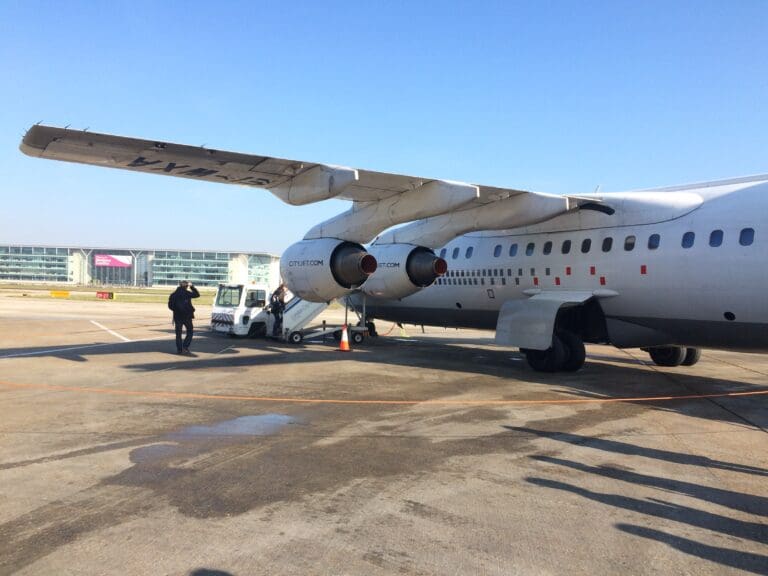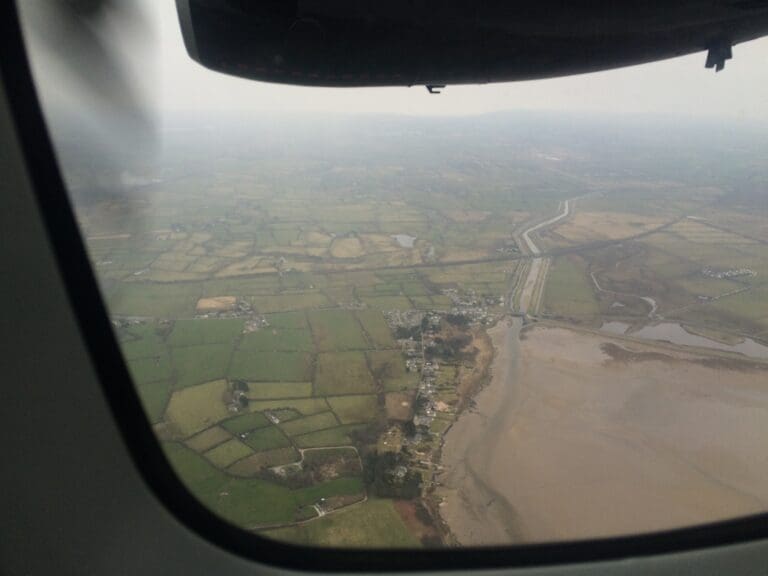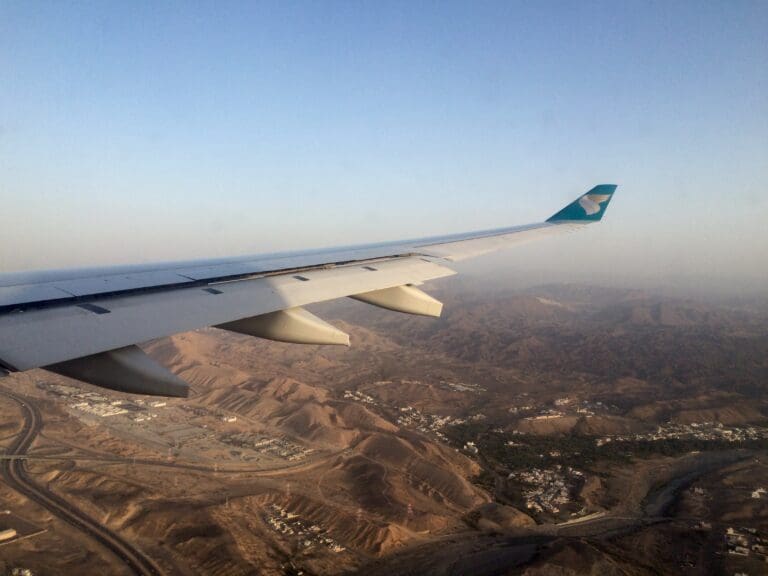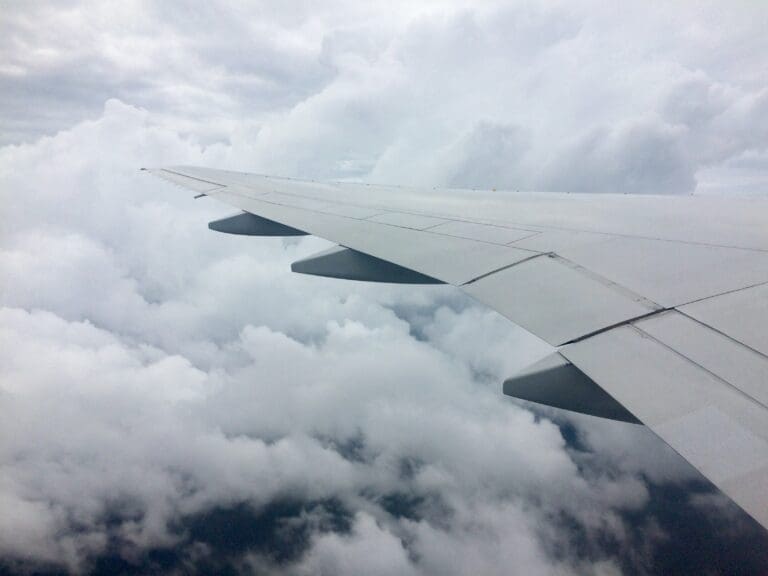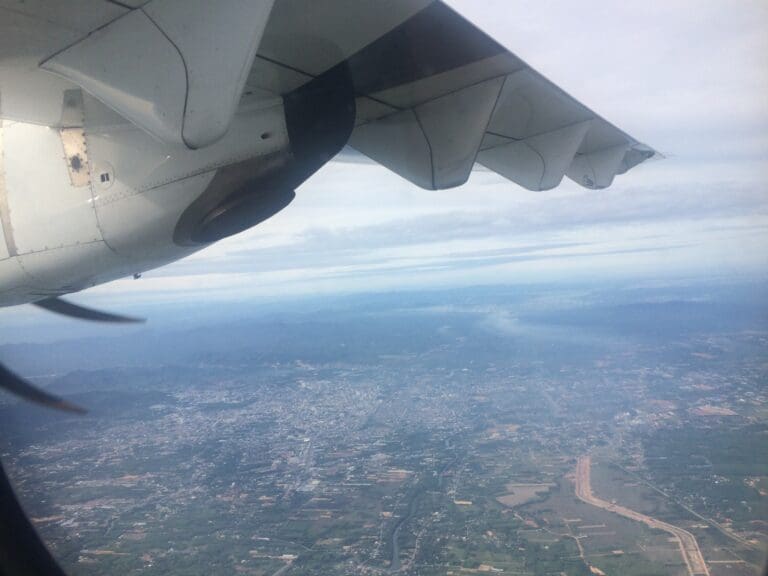Three’s a Charm: A Trio of China Eastern A320s from Seoul to Okinawa via Yantai and Shanghai Pudong
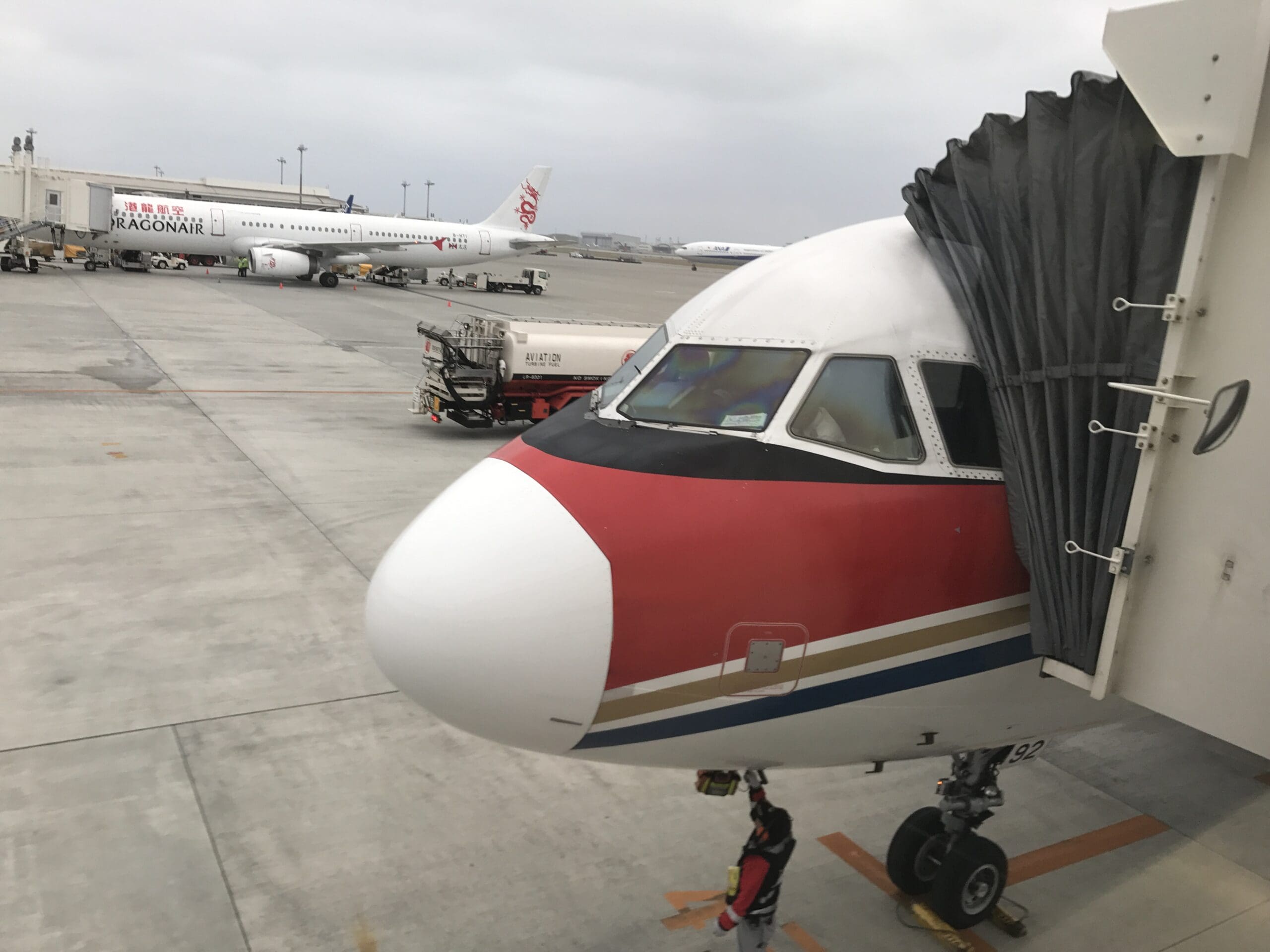
You can skip to the individual flights by clicking the links below:
Shanghai Pudong to Okinawa Naha
Background
Having been rather busy studying over the freezing Korean winter and unable to take much time out, I had little intention of travelling abroad. However, by early February, with some money to spare and seeing as the endless studying was beginning to get me down, I pondered the possibility of a temporary escape to somewhere where the ground wasn’t frozen and I could perhaps wear a T-shirt. Initially, I had been drawn to some cheap fares down to Kuala Lumpur offered courtesy of Air China via Beijing. However, by the time I got around to booking these, unfortunately, prices had risen sharply and thus this no longer proved to be a viable option.
Thus, turned my attention to a few destinations closer to Korea yet still a little warmer – Hong Kong, Okinawa and Taiwan. Of these, Okinawa was the only destination that I had yet to visit, and, being a very popular destination for Koreans, plenty of reasonably priced flights were available from Incheon. Despite being served by all Korean low cost carriers, much to my surprise, all of these were undercut by Chinese full service carrier China Eastern Airlines. However, all of the airline’s cheap itineraries were perhaps unreasonable to most, involving a Chinese domestic flight and an overnight stop in a Chinese city. This requires passengers to hold a Chinese visa and be willing to fork out for two one-night hotel stays. Fortunately, holding a multiple-entry Chinese visa, with a fair amount of time and being a true aviation enthusiast, I saw it as my duty to try and fly the most interesting routing! In doing so, I would end up turning a 1560-mile round trip into a massive 4590-mile trek.
The outbound route would take me on three China Eastern Airlines Airbus A320s. Specifically, I would embark on an afternoon flight from Seoul Incheon to Yantai before heading onwards to Shanghai Pudong the next morning and connecting onto a flight to Okinawa. The return journey would be far less direct and would take me from Okinawa to Shanghai Pudong where I would make an overnight stop. From there, I would continue heading westwards, flying on China Eastern Airlines’ morning service from Shanghai Pudong to Kunming, a flight that makes a stop in the city of Nanchang. Finally, once in Kunming, I would exit China and fly on a China Eastern Airlines Boeing 737-800 to Seoul Incheon. However, as it turned out, a delay in Nanchang on the return journey would see me getting more flights than I bargained for! Not only would this itinerary allow me to experience multiple regional airports across China, it would be my first time sampling China Eastern Airlines.
Flight 1: Seoul Incheon to Yantai Penglai
Having booked at the last minute, departure day soon arrived and the crisp yet cold sunny days that Seoul had been enjoying had been replaced by fog and low clouds which took great delight in dumping a mixture of snow, sleet and rain on to me as I made my way to university on the morning of my adventure. Seeing as I would head straight to Seoul Incheon Airport once I had finished my classes, I opted not to bring along an umbrella and swapped my winter coat for a much lighter autumn/spring one. This resulted in some strange looks and a couple of warnings about the dangers of getting a cold. By 1100, the class was over and after changing some money into Chinese Yuan at a nearby bank, I boarded a near-empty Incheon Airport bound all-stop AREX train at Digital Media City Station in western Seoul’s Mapo District.
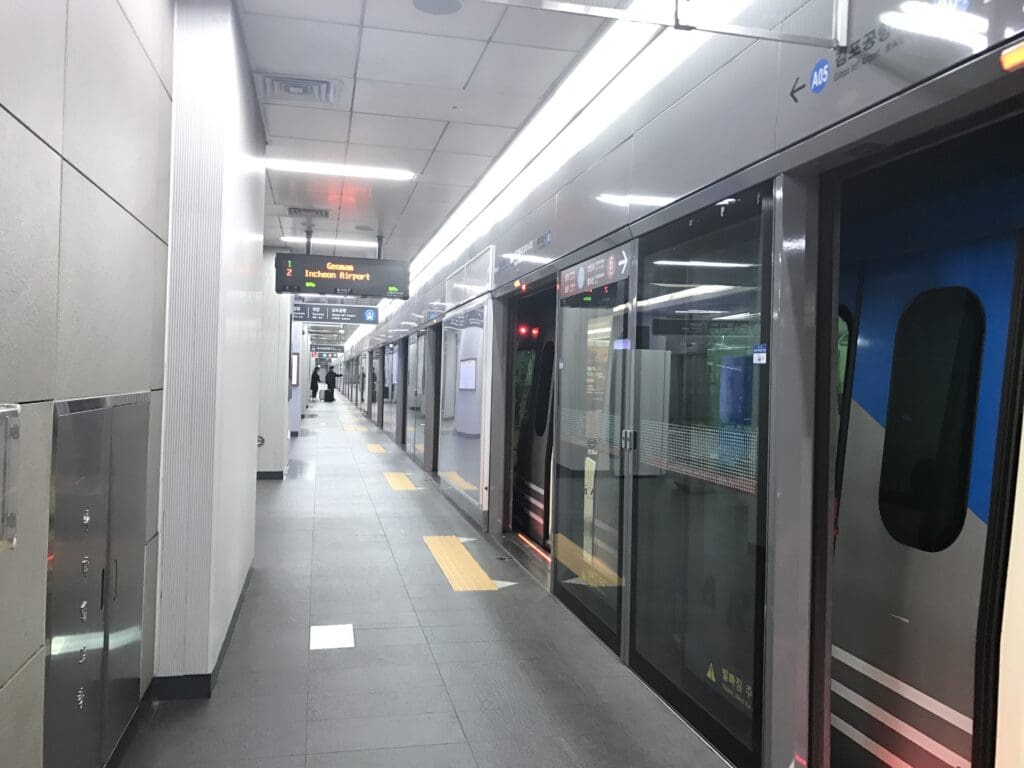
Going without a glitch, after 45 minutes whizzing through the semi-rural areas between Seoul and Incheon and flying over the bridge that connects the mainland to Yeongjeong Island, at around 1220 the train came to a halt at the airport. Once off the train, I made my way up the escalators towards the barriers where I tapped out and commenced the short walk to the terminal’s cavernous and modern check-in hall. Operating more flights to Seoul Incheon than most other overseas carriers, unsurprisingly China Eastern Airlines occupied a large and fairly well-branded check-in space. However, once there, I was somewhat taken aback by just how chaotic things appeared, with a long snaking line of passengers leading up to these counters. Looking around, many passengers appeared to be rather irate, shouting and pushing their way to the front, perhaps fearful of missing flights. This was not assisted by the fact that many passengers appeared to be travelling with significant amounts of luggage of all shapes and sizes.
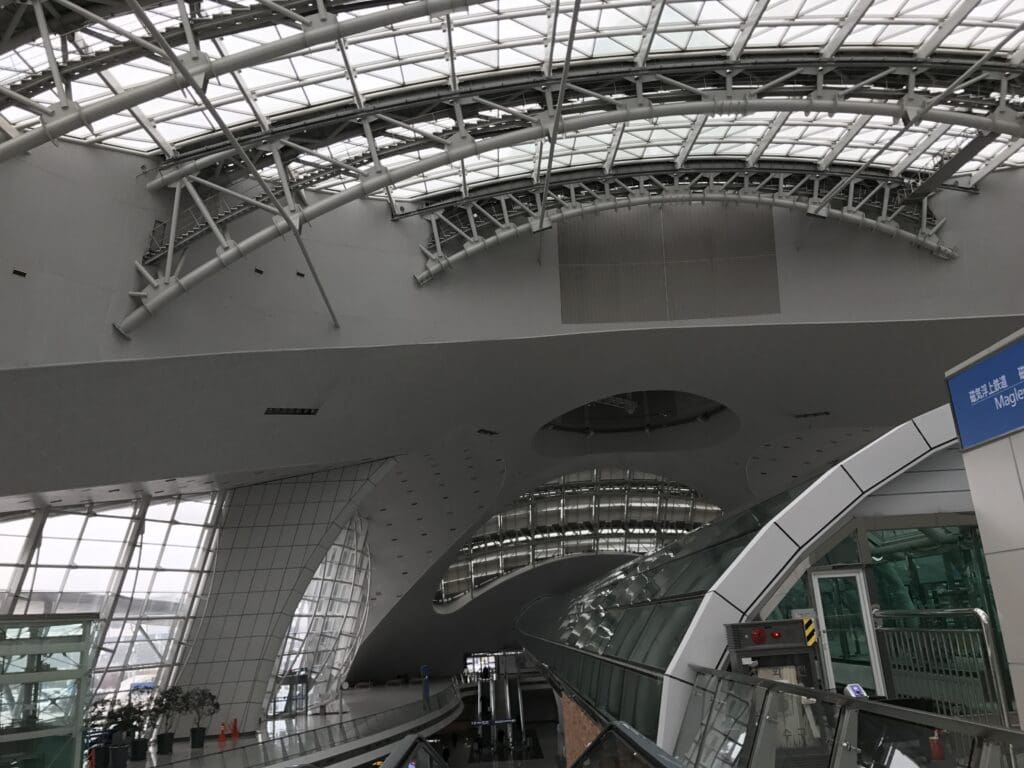
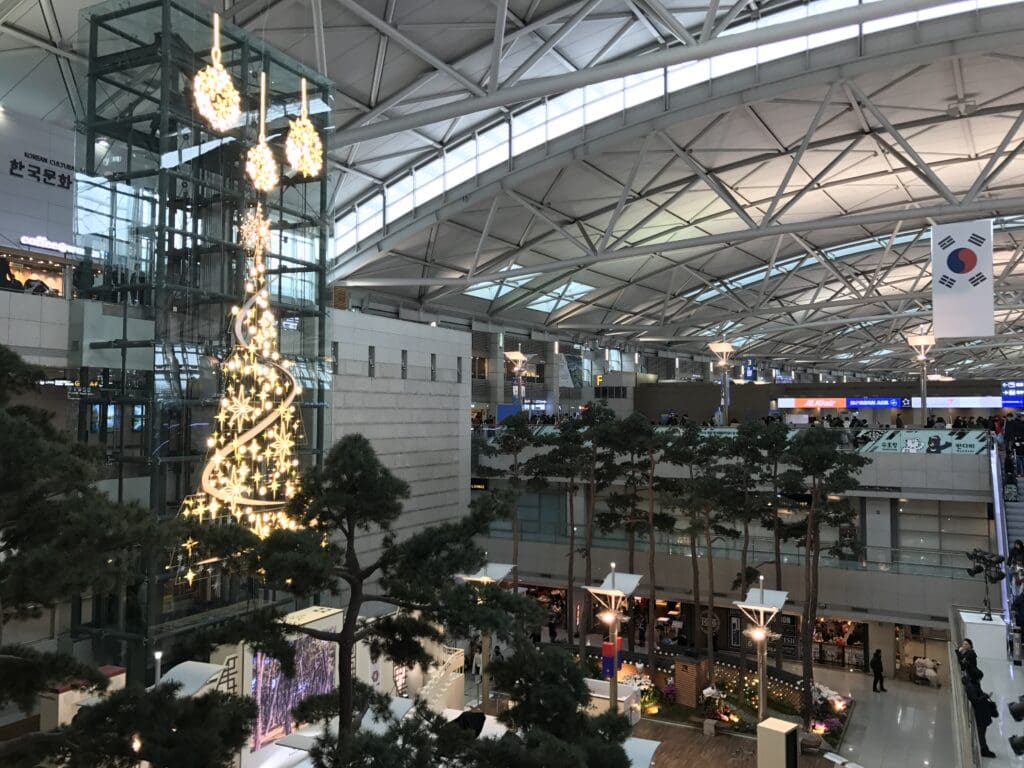
Perhaps giving them a baptism by fire, a young Asiana Airport staff member whose name badge noted them to be a trainee had been delegated the unenviable task of sorting this mess out. However, appearing to be unable to speak Mandarin, and with many of the passengers unable to communicate in English or Korean, this staff member’s efforts did not seem to do much in controlling the situation and reinstating order. As a result, this unfortunate person appeared to be visibly stressed and on the verge of breaking into tears. I really did feel incredibly sorry for them and wanted to shout at all the badly-behaved passengers, commanding them that if they didn’t queue properly they wouldn’t be allowed to fly, although I don’t think this would’ve helped!
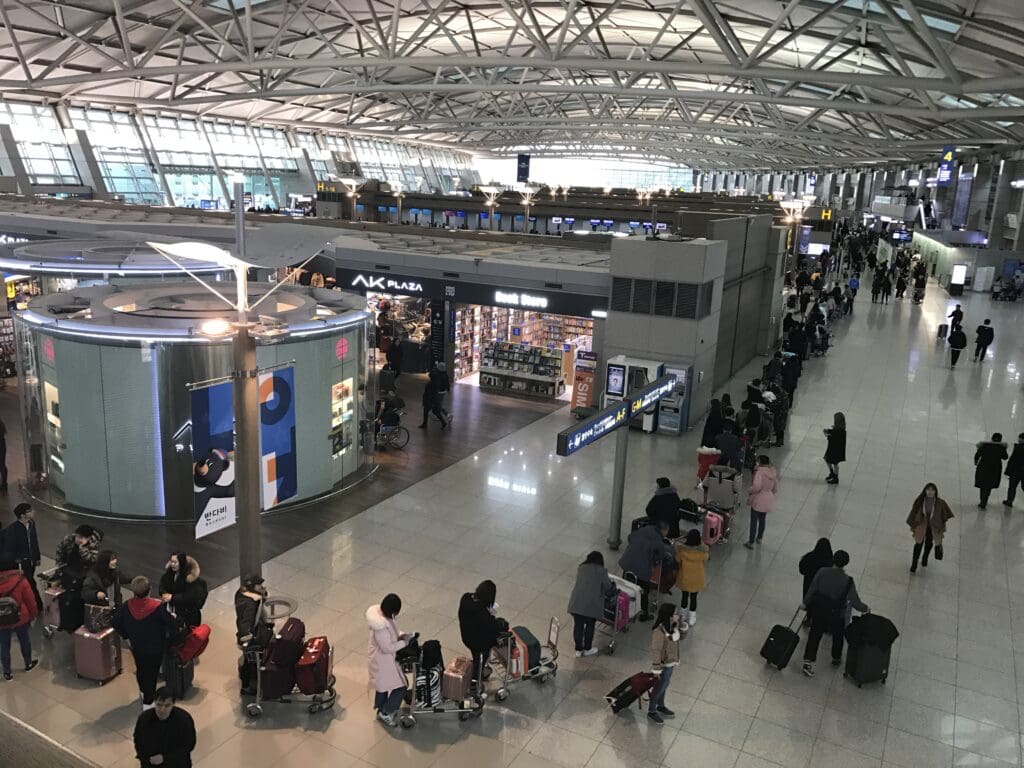
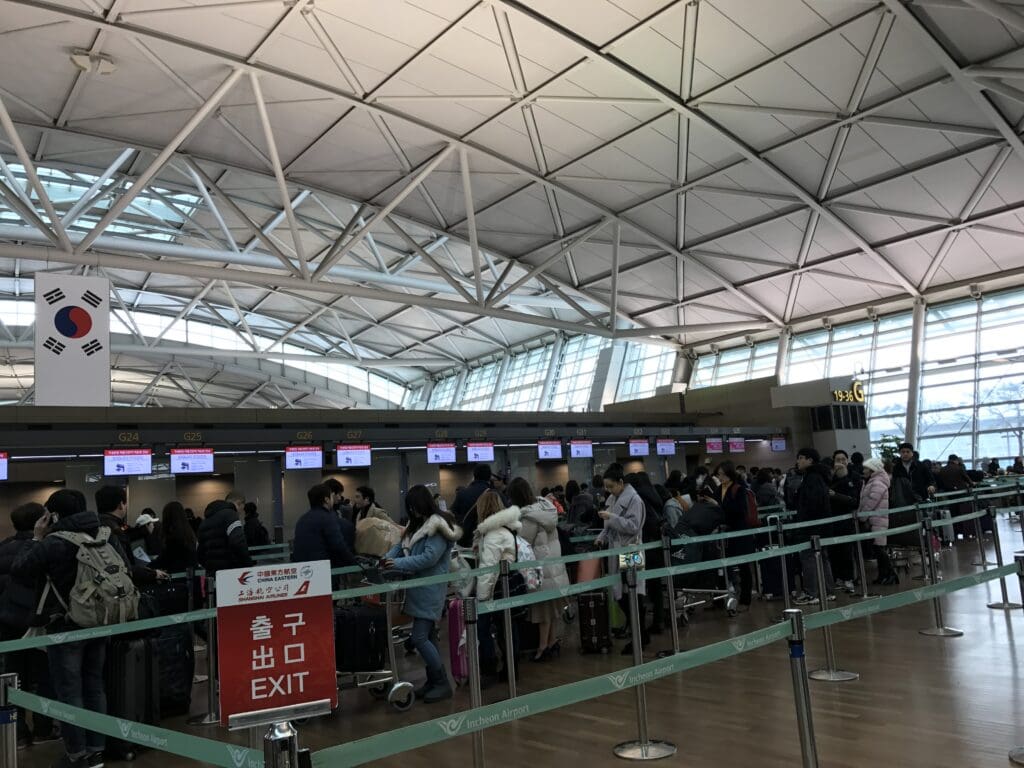
Whilst I lacked hold luggage, seeing as online check-in had not worked, and with no automated check-in machines for China Eastern Airlines’ passengers at Seoul Incheon, I had no choice but to join the long queue of passengers. After waiting for about twenty minutes, a staff member passed down the line enquiring as to which flights passengers would be taking. After replying that I was on the afternoon’s Yantai service, I was informed that this had been delayed until 1810 and I should return to the queue at 1500. On the plus side, I was informed that my lack of hold luggage meant that I could skip the queue and head to the Business Class check-in desks when I returned. To pass the time, I headed upstairs to the hanok area where I watched as a mixture of Korean Air’s widebodies were loaded up in the terrible weather ready to head off to destinations both near and far. Following a long stroll and an unhealthy late lunch at fast food joint Lotteria, 1500 arrived and I decided to attempt to check in again. Sadly the promise of being allowed to head to the Business Class counters never came to fruition and I was advised to head to the back of the line. For the next hour, I waited and slowly shuffled forward, attempting to guard my position against the many passengers who attempted to push in.
After an hour of waiting, I seemed to be around half way to the check-in desks, however, suddenly the skies opened and a hero dressed in an Asiana Airport uniform appeared and asked me if I had any luggage that I needed to check in. Travelling with just hand luggage, I was escorted to the Business Class check-in desks where I was soon greeted in English and Korean by a very polite and friendly check-in agent. After checking my Chinese visa and doing some rather intense typing, my China Eastern Airlines boarding pass was printed out which listed the flight’s boarding time as 1750 and I was advised to head straight to the airside area.
Contrasting with check-in, security and immigration were, as per usual, absolutely painless and I was through to the airside area in no more than seven minutes. Seeing as my flight would be departing from the satellite terminal, once airside, I opted against dillydallying in the main terminal and headed straight down to the escalators to catch the people mover under the apron to the satellite terminal. Timing this correctly, I stepped straight onto a train and the doors slid shut behind me. That afternoon the train appeared to be jam-packed mostly with joyful young Korean passengers dressed in summer clothes bound for the seaside resorts of the Philippines and Vietnam. Within a minute or so the train pulled into the satellite terminal station and we piled off, heading up the escalators into the departures area of the satellite terminal.
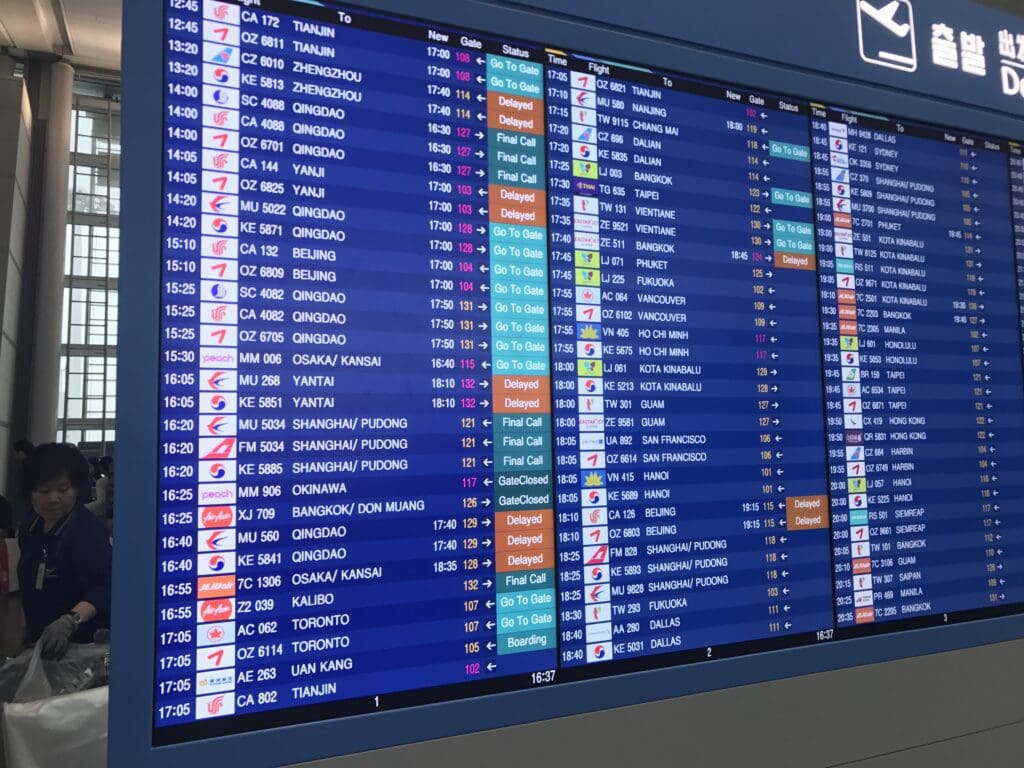
Despite the high number of flights, the satellite terminal appeared to be pretty calm with plenty of space to sit down and relax. As per usual the wifi worked well and for the next couple of hours or so I took a seat and relaxed by watching the constant stream of traffic outside. As was to be expected, plenty of Boeing 737-800s operated by Korean low cost carriers Eastar Jet, Jeju Air and T’way Air could be seen, alongside plenty of jets from China provided courtesy of Air China, China Eastern Airlines, China Southern Airlines, Shandong Airlines and Shenzhen Airlines, with these ranging in size from the Airbus A319 to the Airbus A330-300. Adding a touch of vibrant colour to the dreary weather, a KLM Boeing 747-400 Combi could be seen outside alongside a lime green S7 Airlines Airbus A320 that was on a short turnaround having arrived from Vladivostok. Aside from watching the aircraft, I strolled around the terminal, eventually stopping for a cappuccino at which point I spotted an American Airlines Captain heading to pilot their Dreamliner back to the States, guitar in tow!
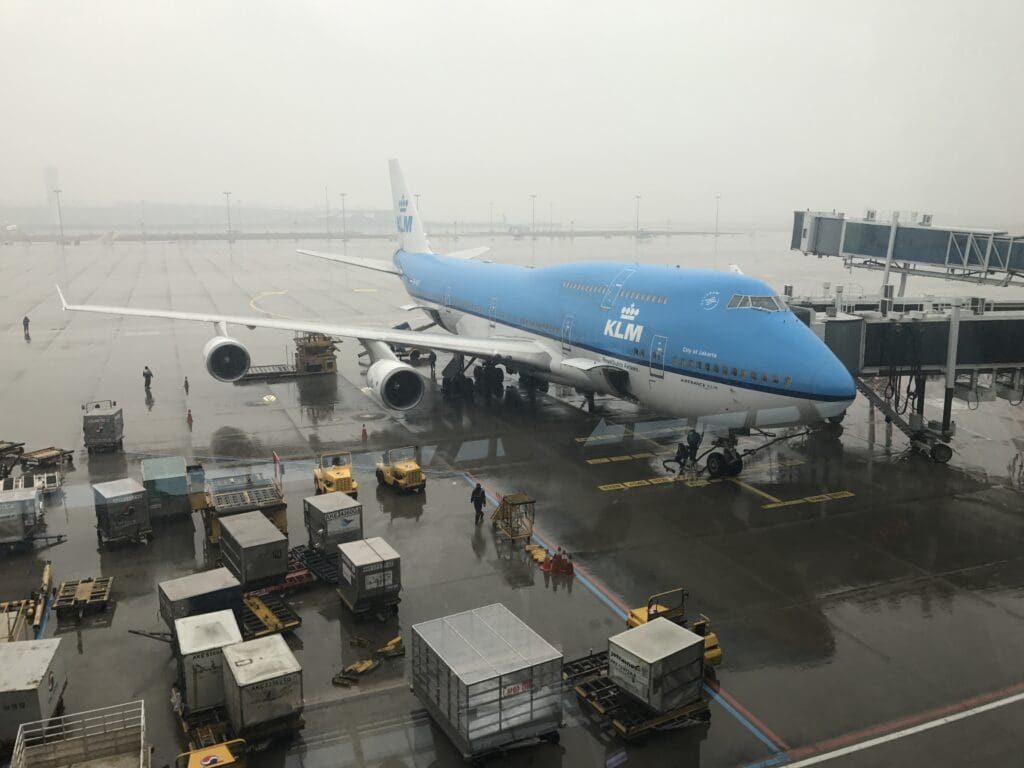

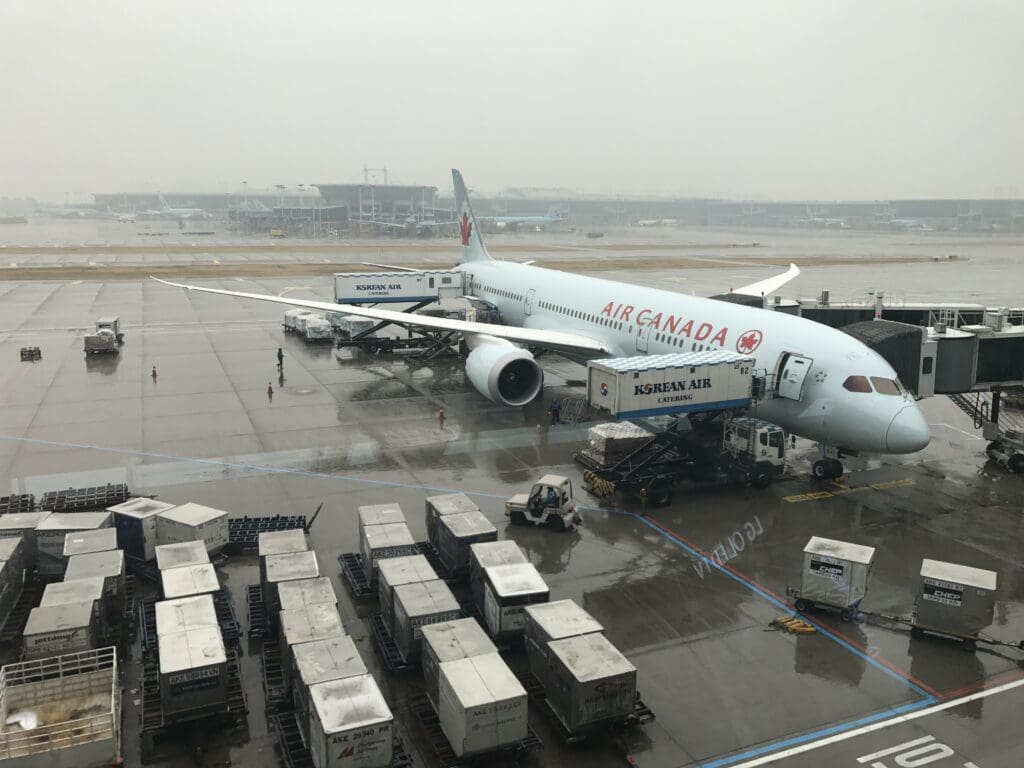
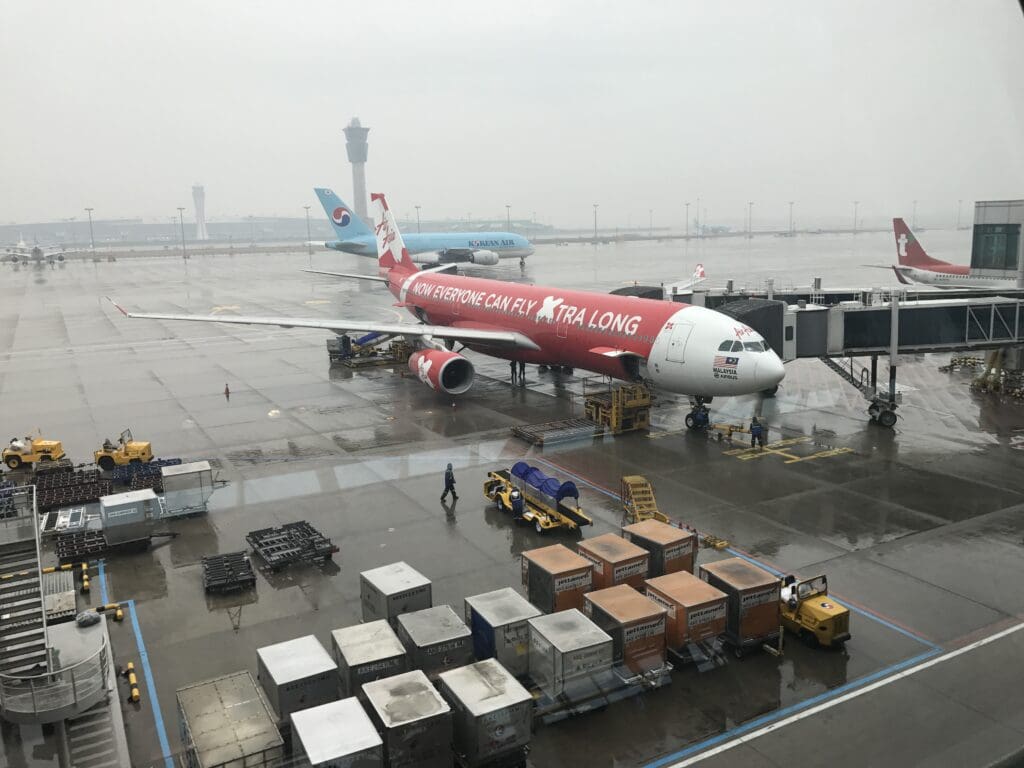
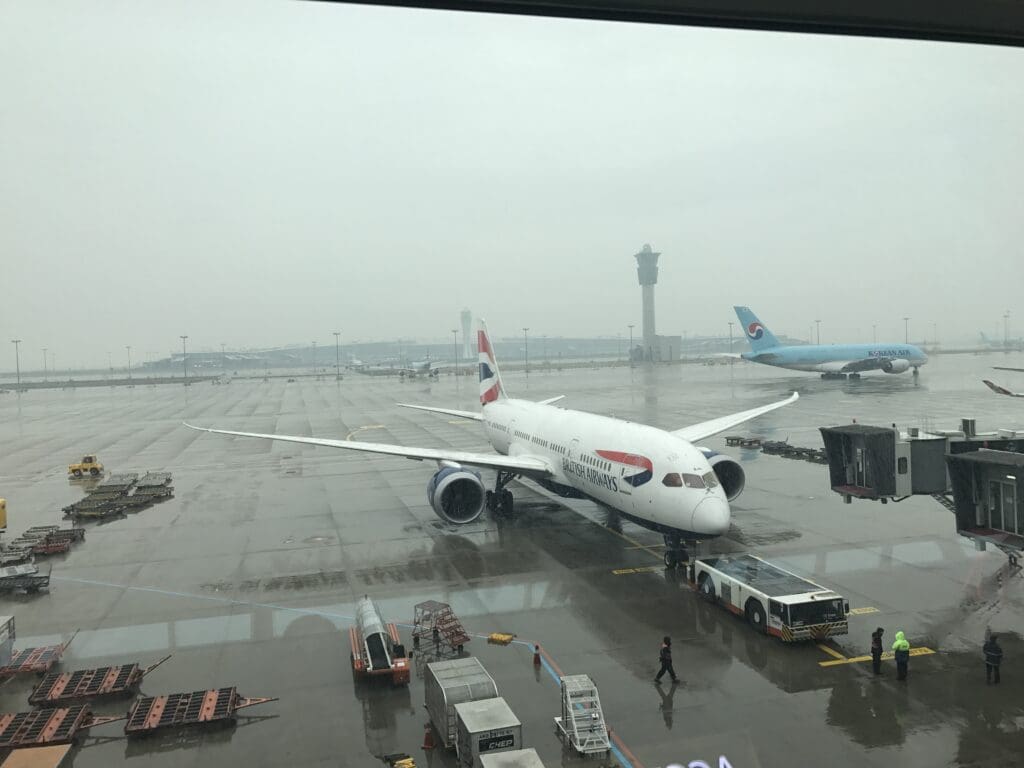
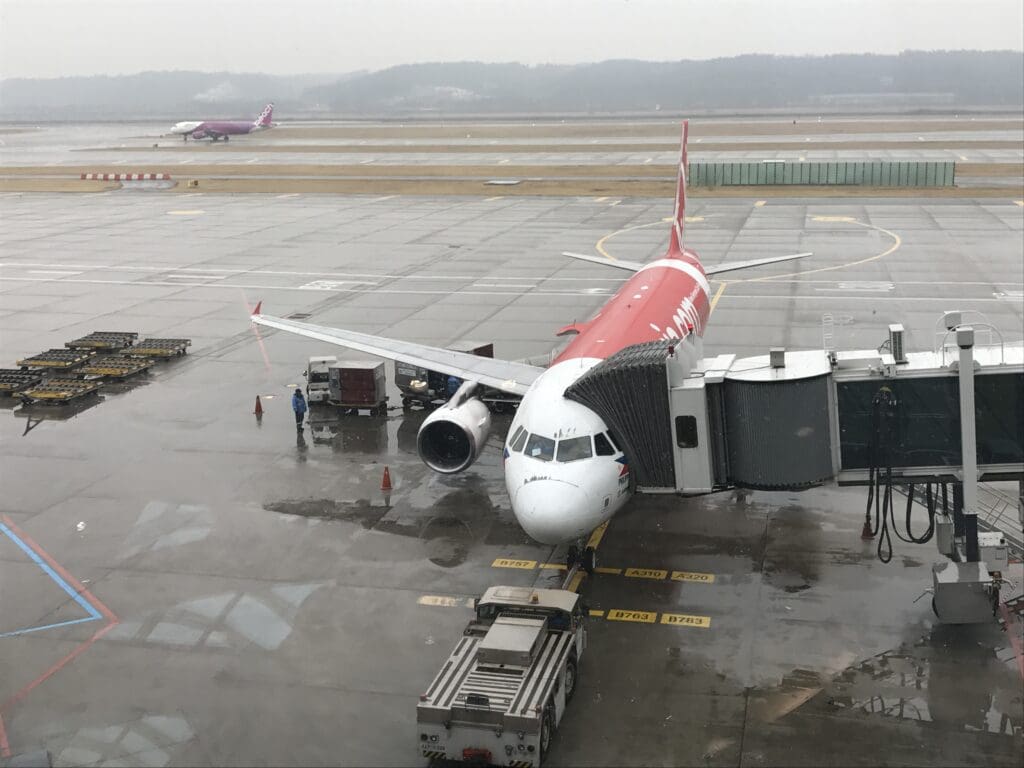

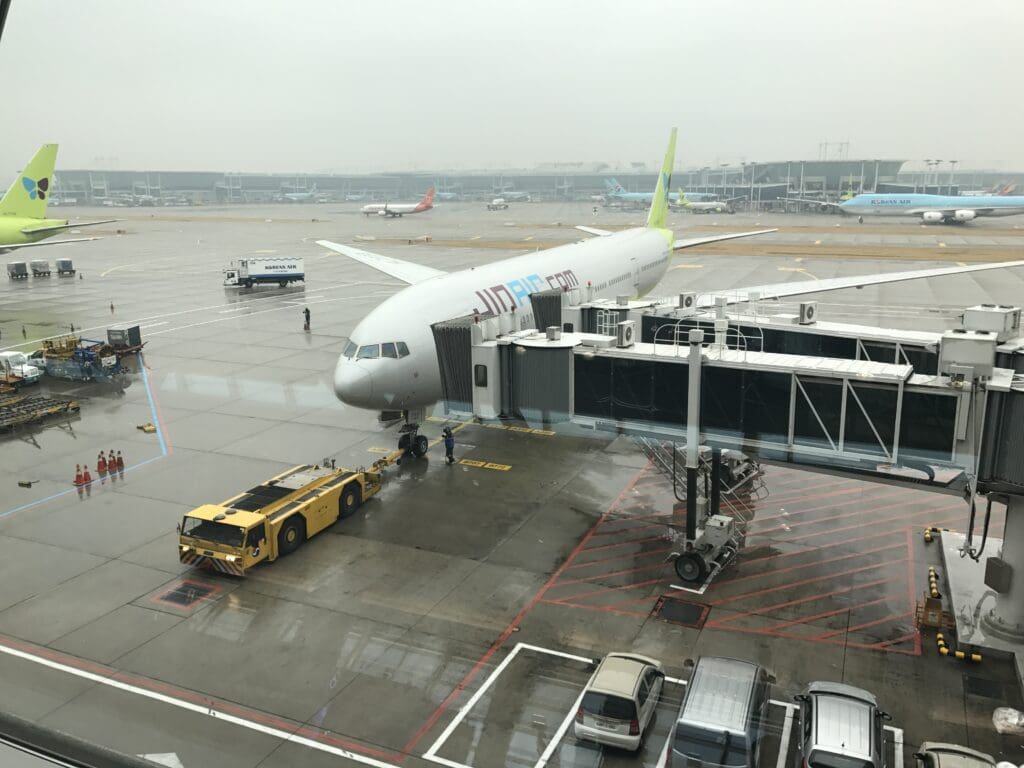
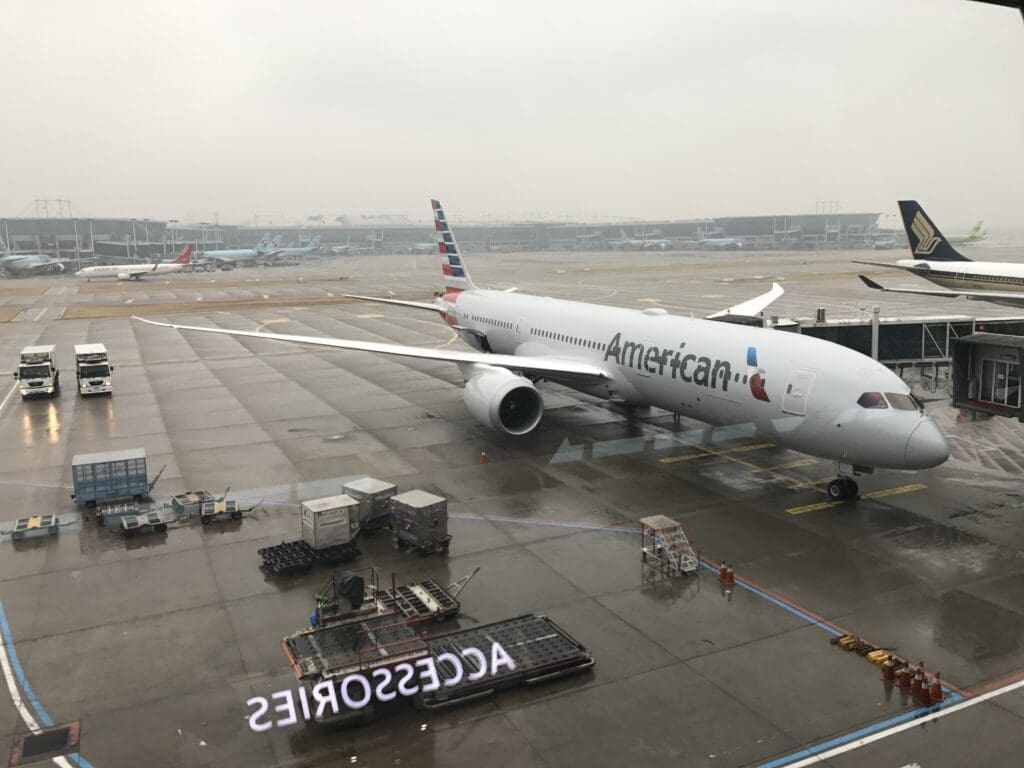
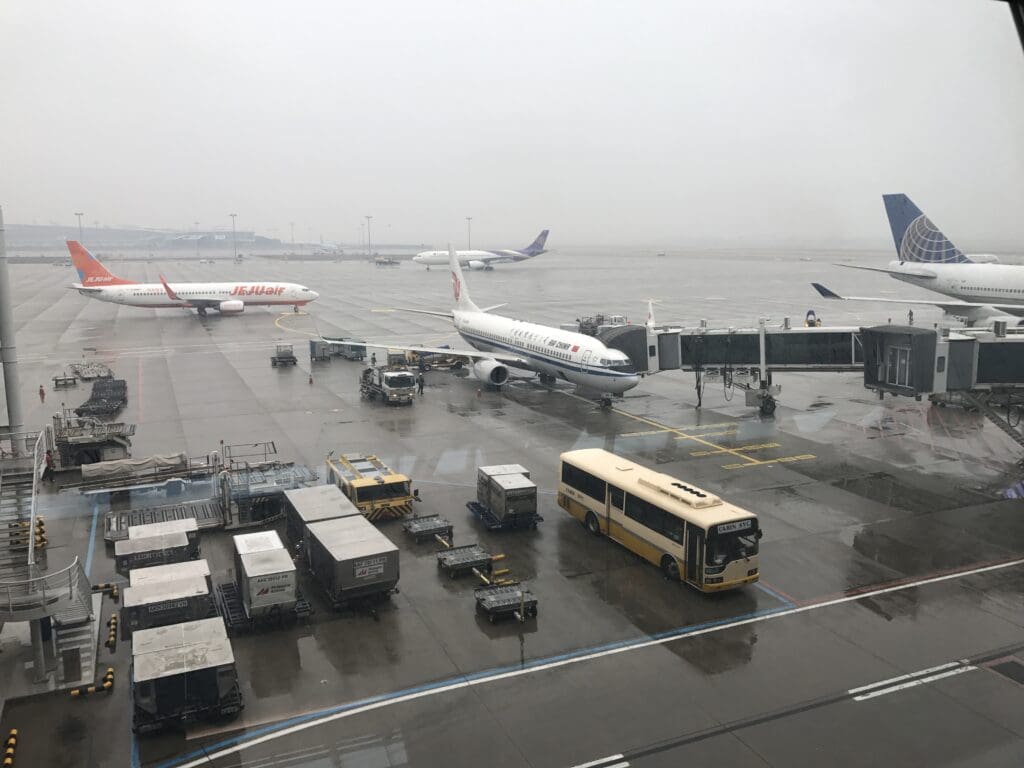
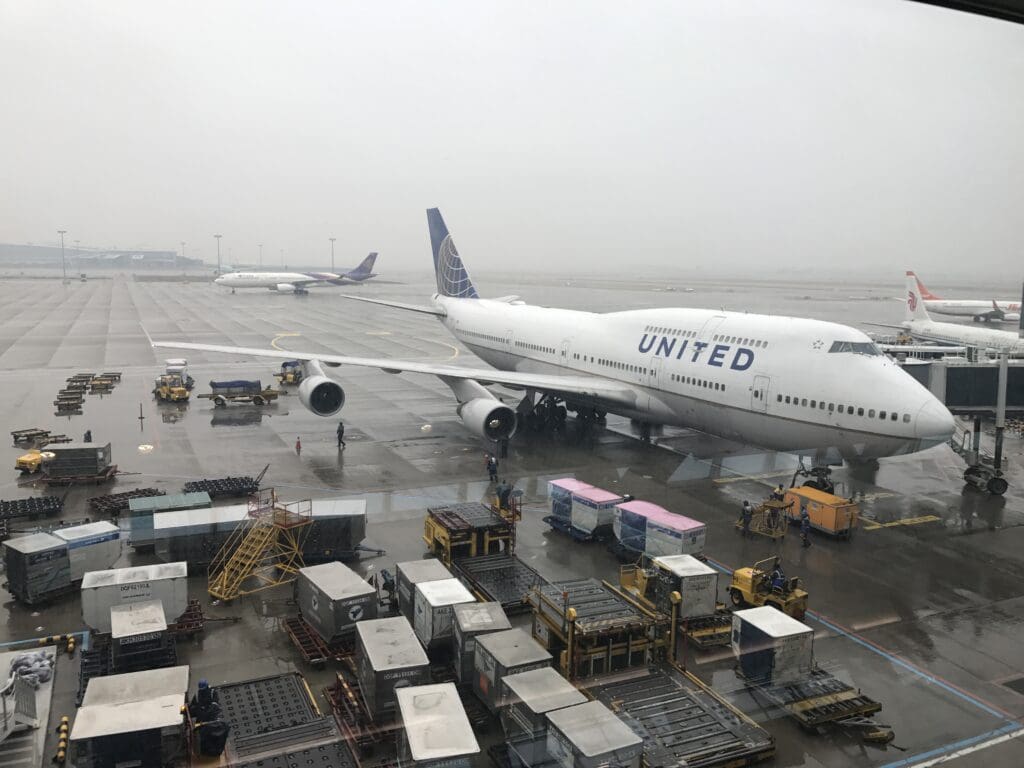
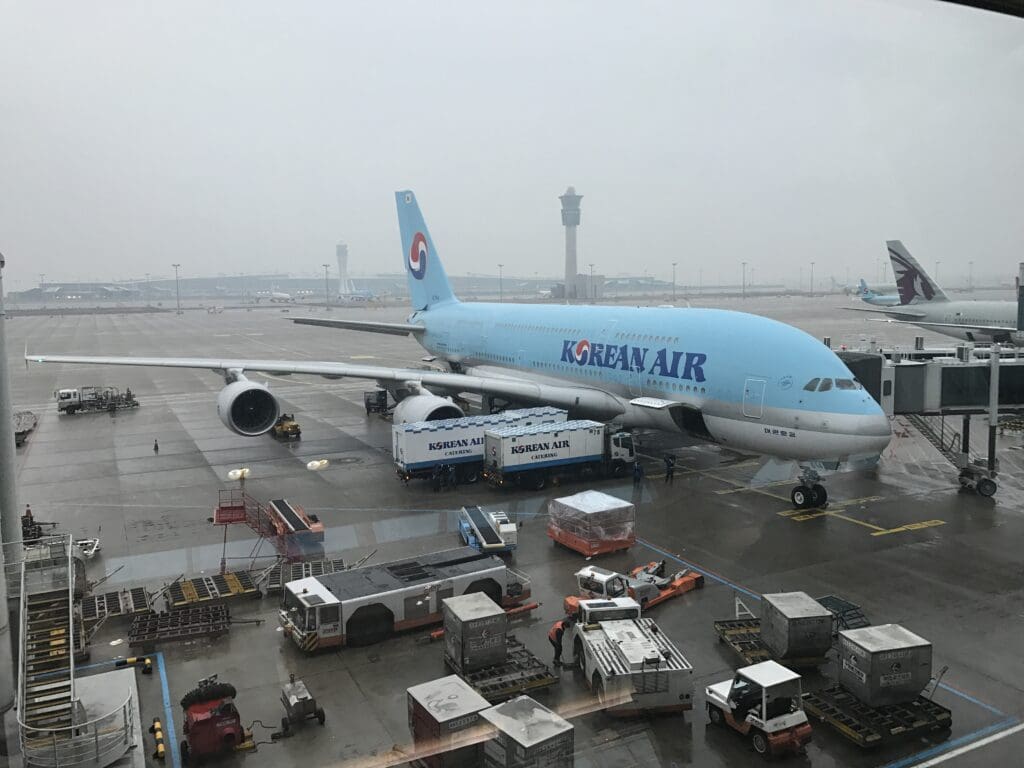
Spotting on a grim winter’s day at Incheon
Now well behind schedule, at 1725, the China Eastern Airlines Airbus A320 that I would flying onboard thay evening touched down on Yeongjeong Island and eventually appeared at Stand 132. Based in Yantai, this particular aircraft had not had the most exciting day, spending the entirety of this hopping backwards and forwards between Yantai and Seoul Incheon. In fact, this was the aircraft’s third visit to Korea that day! This aircraft came in the form of B-6586, an Airbus A320-232 with the construction number of 3775. Manufactured at Airbus’ Tianjin factory, this Airbus made its first flight in August 2009 with the test registration B-504L before being delivered to China Eastern Airlines the following month. This made it around seven and a half years old at the time of my flight. In the past few months, this had received China Eastern Airlines’ new and plain livery.
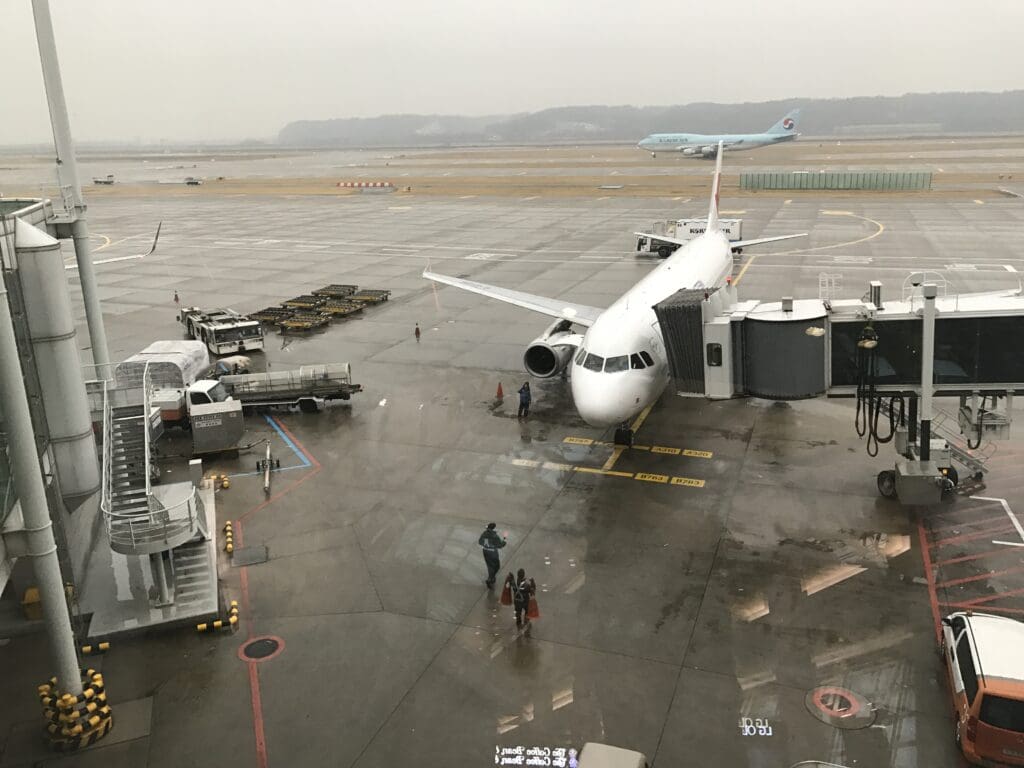
With ten minutes to go until the flight’s new scheduled boarding time, I made my way down to Gate 132 which I found to be full of Russian passengers. This demographic was largely explained by the fact that an Aurora Airbus A319 would later depart to Vladivostok from the neighbouring gate slightly later. Soon, the scheduled boarding time came and went, although there was no sign that boarding was to commence any time soon, other than the two Asiana Airport ground staff members who could be seen typing away at the gate podium. Ten minutes after the flight was scheduled to board, one of the gate agents made an announcement in Korean and English advising passengers of the commencement of boarding. That evening, this was announced in no particular order, with all passengers invited to board at once. Joining the short and orderly queue, my passport and Chinese visa were checked, and within a few moments, I made it to the front where a polite staff member scanned my boarding pass before I was permitted to board.
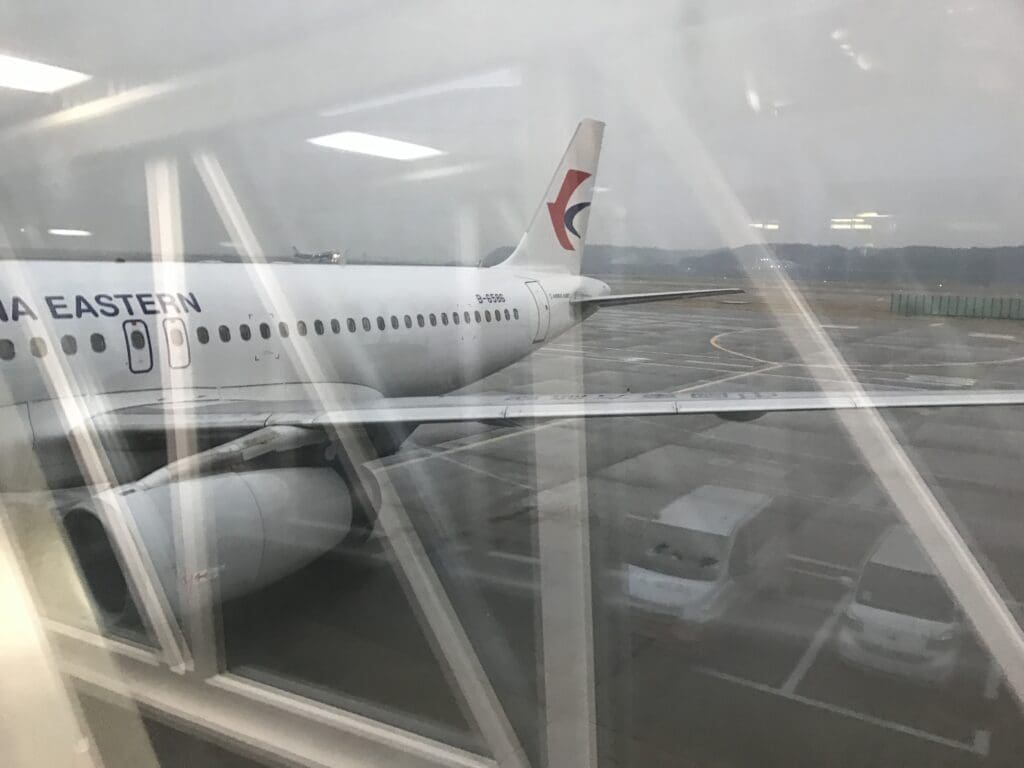
Following another short wait on the jetbridge, I made it to the aircraft and stepped onto the ‘Welcome Aboard’ rug in the forward galley. Leaving me with a positive first impression, once onboard, I was greeted by the Purser who gave me a warm and friendly welcome. Once they had checked my boarding pass, I turned right and entered the Airbus’ small Business Class cabin. Like many narrowbody jets, this consisted of two rows of large recliner seats. Onboard, all seats in both Economy and Business were covered in a royal blue fabric on which a motif featuring a stylised version of China Eastern Airlines’ swallow could be found. Each seat was topped with a disposable antimacassar complete with China Eastern Airlines’ logo alongside an advertisement for what seemed to be a video sharing app. Whilst the presence of the latter may be unusual given China Eastern Airlines’ status as a full-service carrier, this is somewhat normal to see on all airlines across China. In addition, stickers could be found on the underside of each tray table advertising some sort of herbal medicine. Seeing as the aircraft is fitted with overhead screens, an audio channel selector and a headphone socket could be found in each armrest, whilst a cupholder could be found on the underside of each tray table.
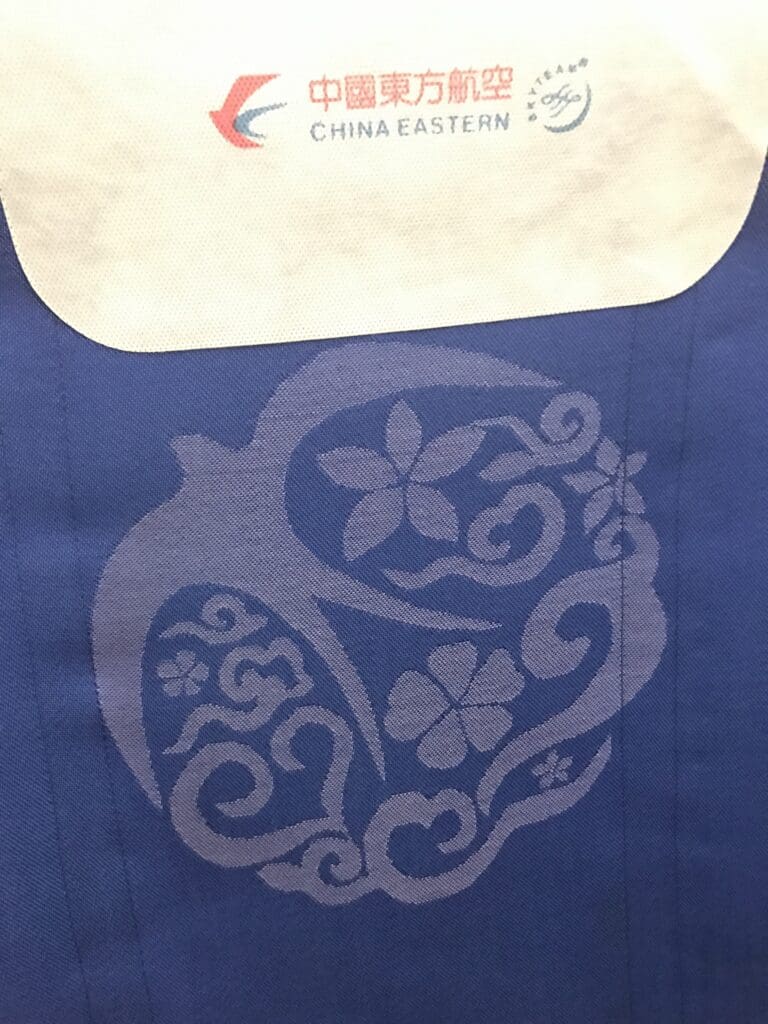
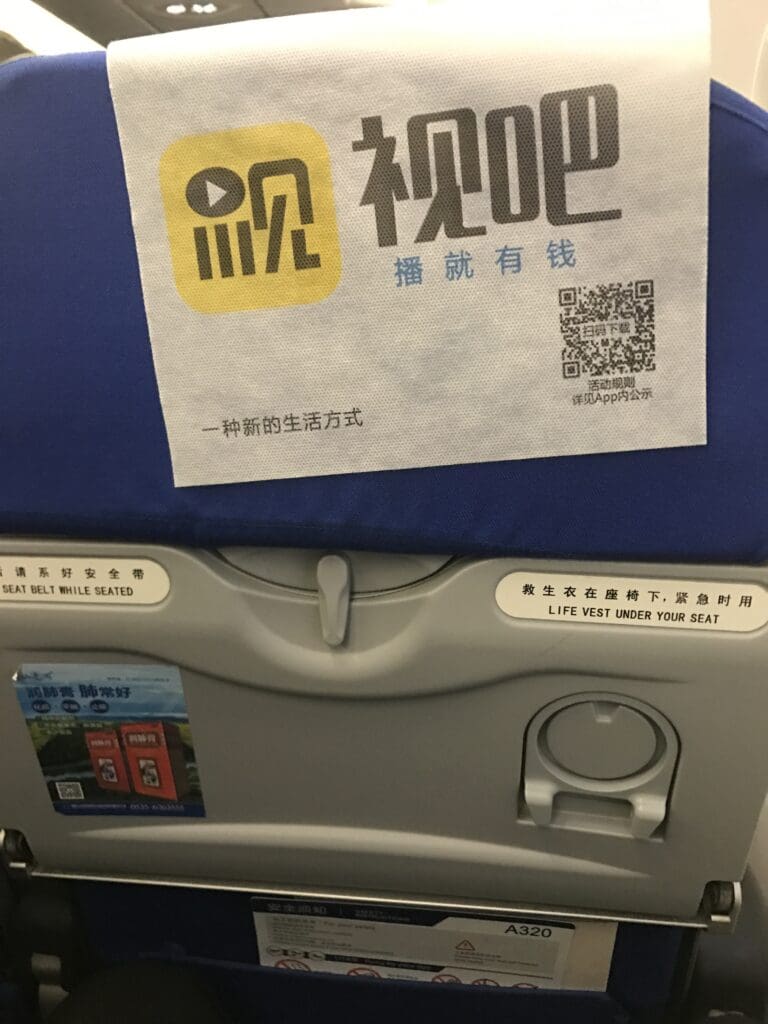
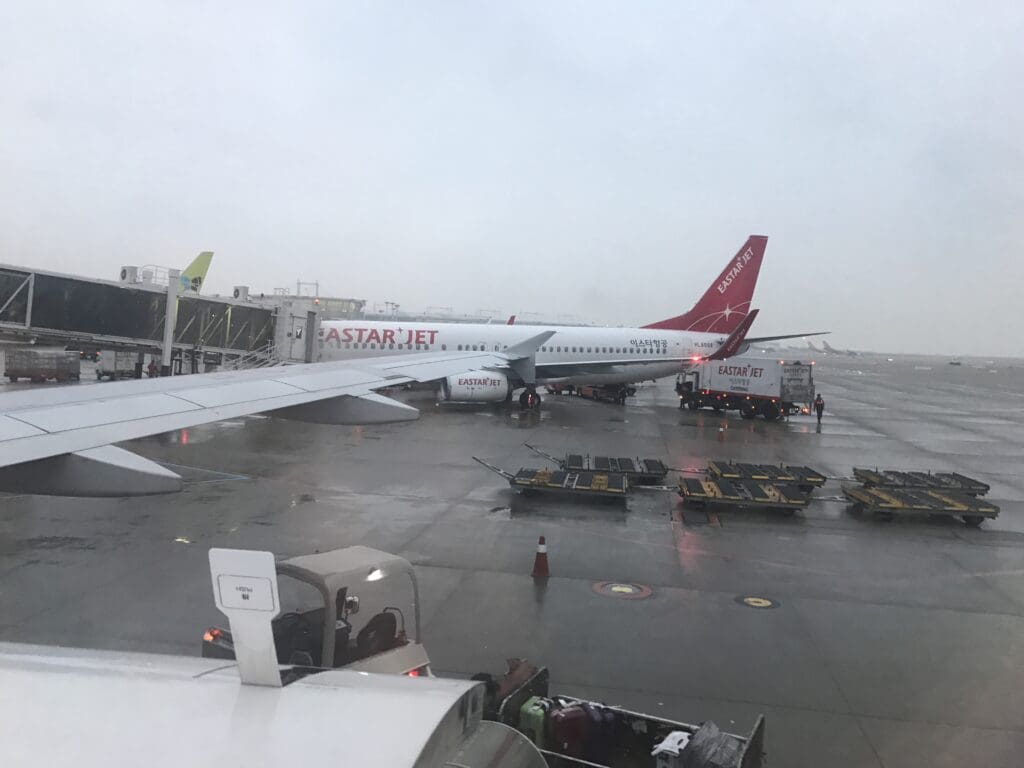
Within a minute of boarding, I reached my row near the rear of the cabin and found that my neighbour had kindly reserved this for me by placing their coat and duty free goods on this. Upon taking my seat, I was pleased to find that despite their somewhat slim appearance, the seats were soft, and comfortable, and offered an adequate amount of legroom given the length of the flight. Looking towards the front of the aircraft, boarding appeared to reach its conclusion several minutes after I had strapped myself in. Whilst my departure day did not align with any major holidays in either China or Korea, the flight was full, with most in Economy taking the form of Chinese leisure flyers, many of whom appeared to be travelling with plenty of shopping in tow. Turning to the crew, most passengers were expectedly Chinese, although China Eastern Airlines does employ Korean cabin crew for their many services to Korea, and thus one Korean speaking flight attendant could be found onboard.
As the clock ticked, the final preparations for our departure were underway both inside and outside the aircraft. Outside, the last of the cargo could be seen being loaded into the cargo down below, whilst inside, despite various commands from the cabin crew advising passengers to take their seats, many of those around me kept jumping up and down to place and retrieve items from the overhead lockers. Meanwhile, once the cabin door was closed, a series of long pre-recorded announcements blurted out through the cabin welcoming us onboard in Mandarin, English and Korean which were followed by announcements in Mandarin and English. Once the last announcement had been completed, the overhead screens dropped into position and China Eastern Airlines’ long safety video was broadcast three times in the aforementioned languages.
As the safety videos played, at 1827 the aircraft jolted backwards and the two IAE V2537-A5 hairdryer engines powered into life before the aircraft began its journey to Runway 33R. Once the safety videos ended, the crew passed through the cabin ensuring all was secure and in place for our arrival before the lights were dimmed. As we made our way to the runway, the aisle seat occupant jumped up and grabbed something from the overhead lockers although they were soon told off by one of the eagle-eyed flight attendants. Looking at the myriad of multicoloured lights outside, as we headed to the runway the aircraft overtook a Jeju Air Boeing 737-800 and Korean Air Airbus A380 bound for Tokyo Narita and New York JFK respectively. Without coming to a halt, at 1842, the Airbus made its way onto Runway 33R and commenced its powerful rolling takeoff.
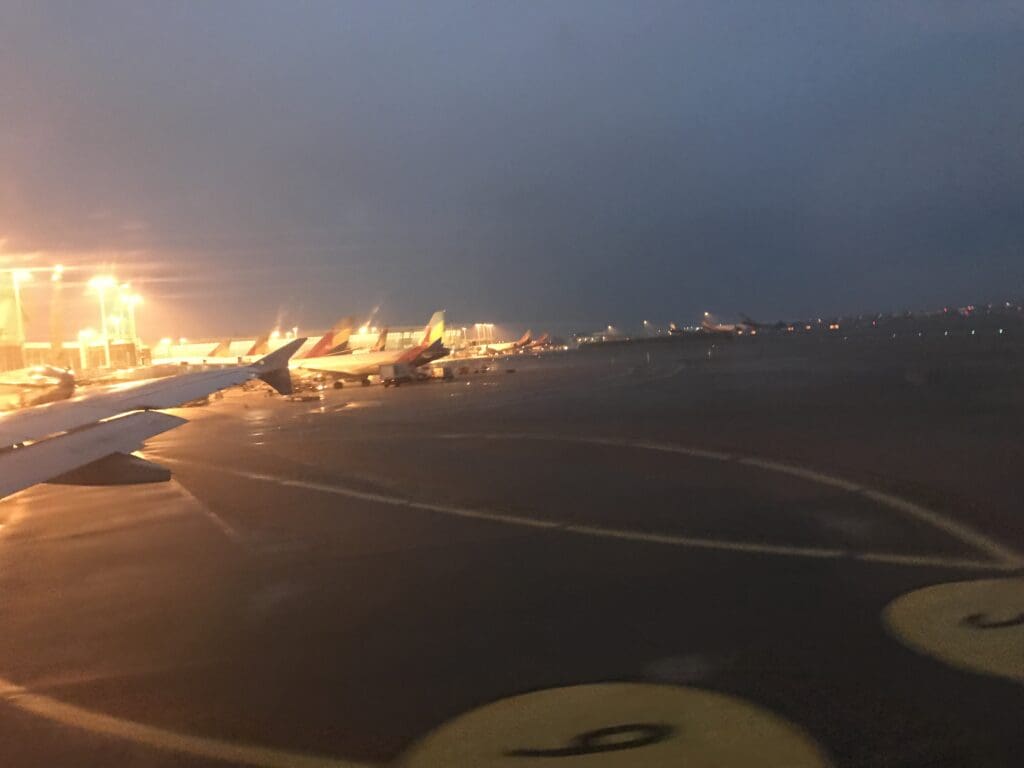
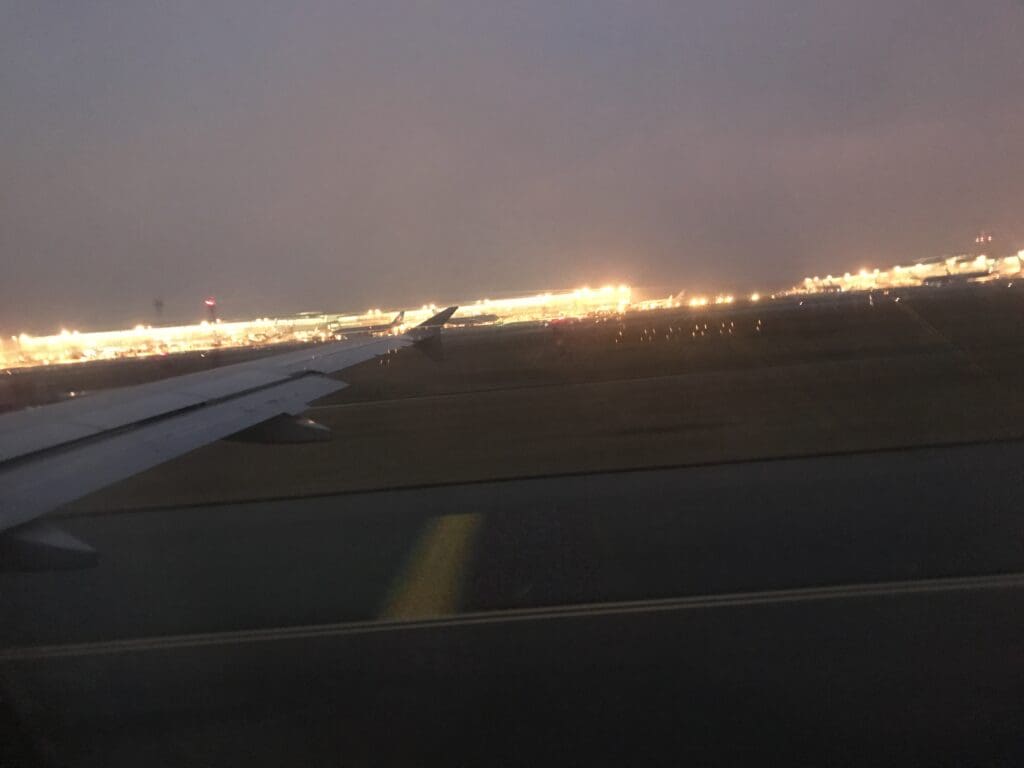
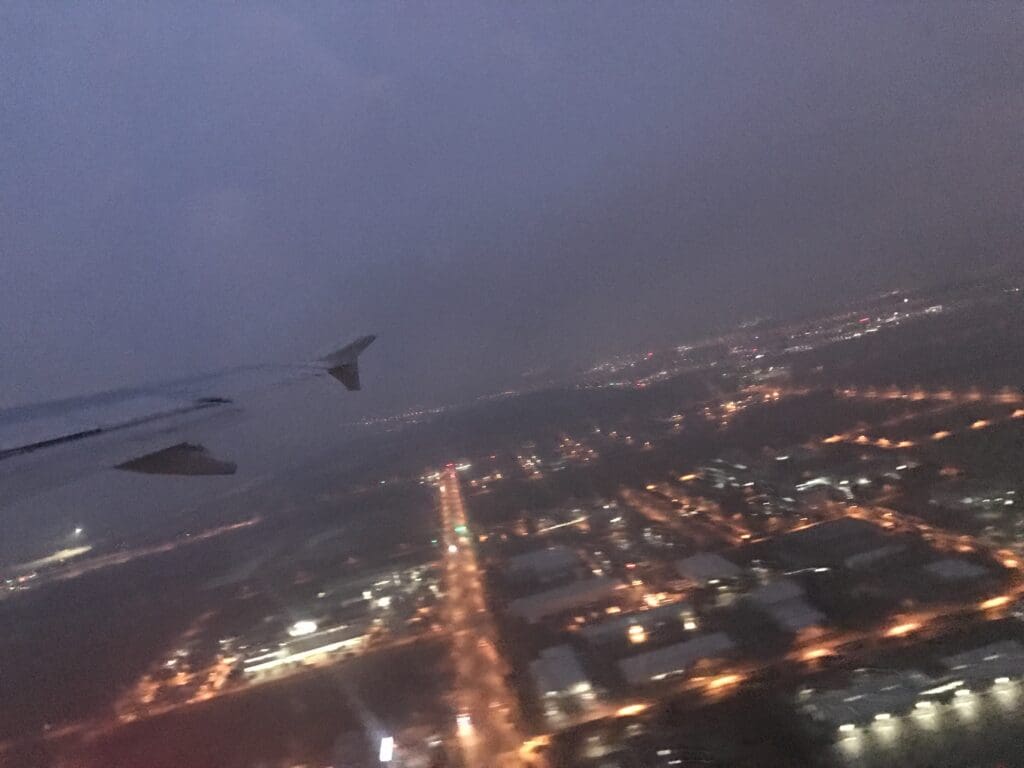
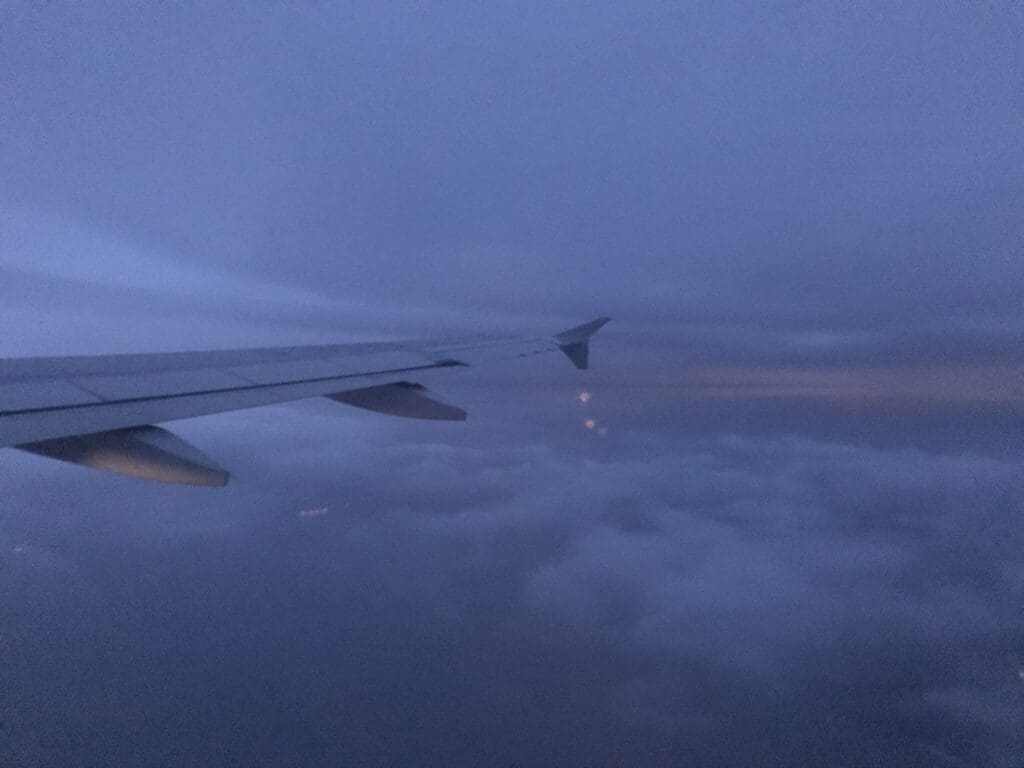
Within no time, the Airbus made a sudden and sporty rotation and climbed up into the grim evening skies. As is usually the case when departing into the north, the Airbus quickly banked to the left and turned onto a westerly heading so as to avoid flying over the Demilitarized Zone. In the usual manner, as we climbed through the skies, we were thrown about a little and soon the overhead screens were extended once more. These initially played two promotional videos – one for China Eastern Airlines and another that seemed to advertise the Chinese military. These were followed by a short episode of Just for Laughs along with several Chinese advertisements.
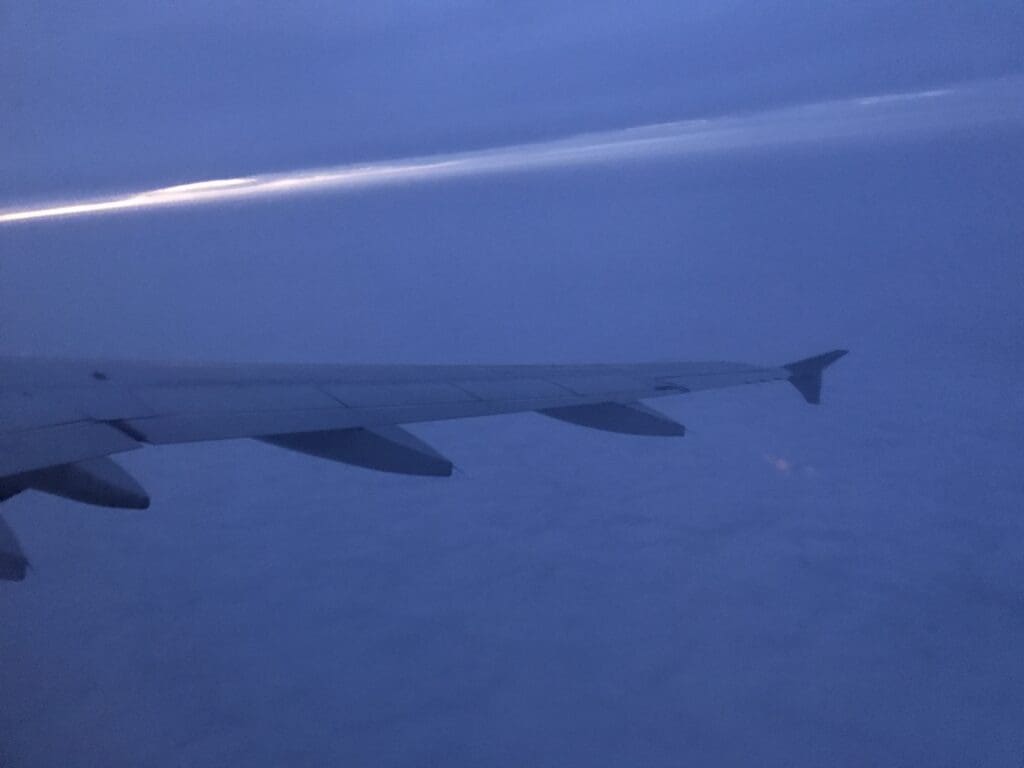
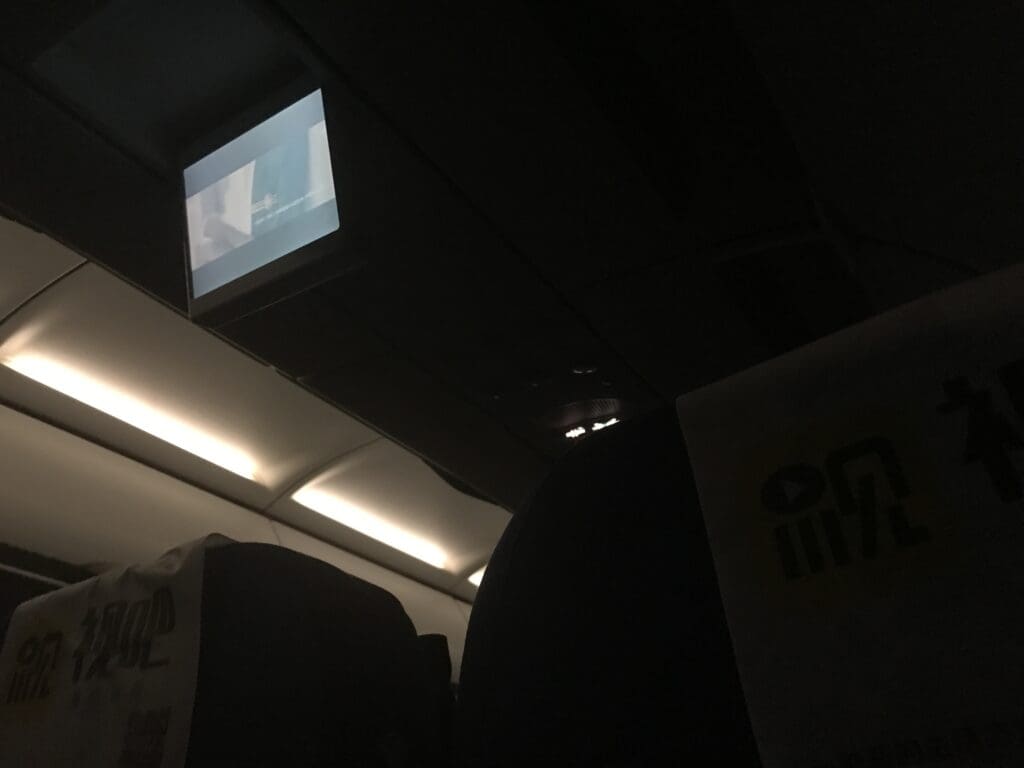
Despite the short length of the flight, all passengers were to be offered a light dinner service. Almost as soon as we levelled off, the crew took to the aisles and began to distribute this evening meal. Commencing this, one crew member speedily passed through the cabin passing three bottles of water to each aisle seat occupier who was entrusted with the task of passing these on to those in the middle and window seats. Several minutes later this was also done for the mystery boxes. Opening this up, I found this to contain a rather decent amount of food consisting of a warm pork bun, biscuits, a muffin and a mini Snickers bar. Hot tea was also offered slightly later on however I decided to pass on this.
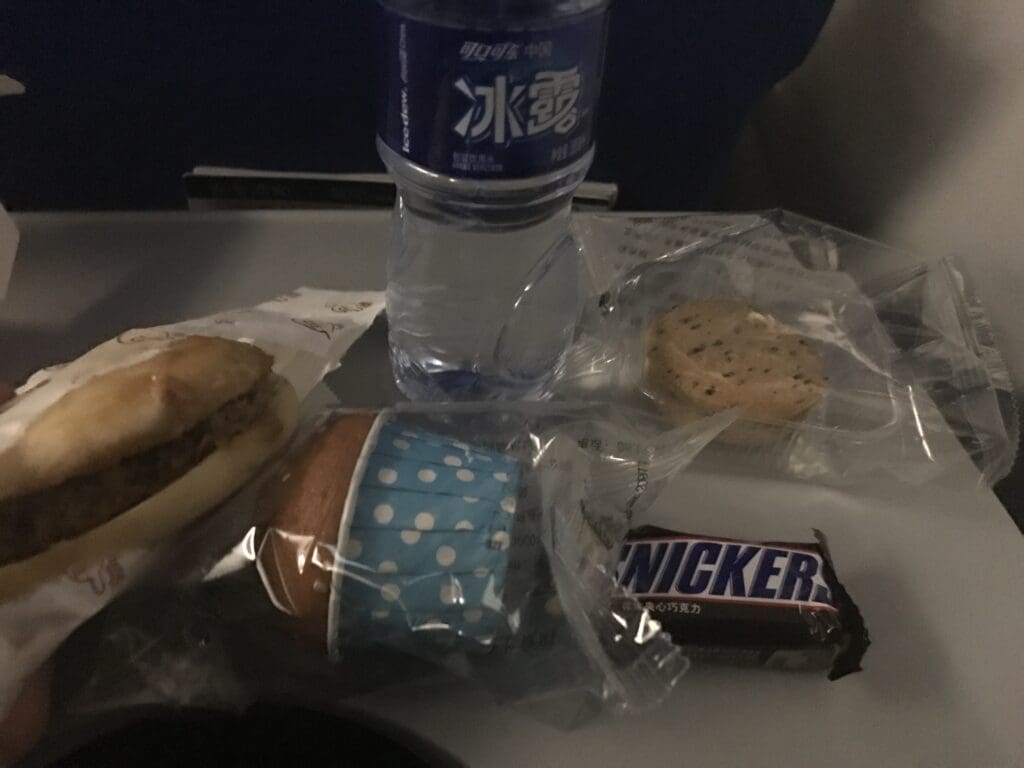
Almost as soon as the cabin crew had finished distributing the meal boxes, the aircraft could be felt commencing its long step-decent into Yantai. Unsurprisingly, given the fact that, in my experience, Chinese airlines tend to keep the seat belt signs on until the aircraft has reached cruising altitude, given the flight’s duration, these remained on during out short cruise. However, the crew appeared to take no issue with those who stood up or moved around the cabin once we were in the cruise. Minutes after the aircraft commenced its descent, the cabin crew made an announcement requesting passengers to fasten their seatbelts and put their tray tables up. Not too long after, the crew passed through the cabin ensuring this was secure in preparation for our arrival. Interestingly, no rubbish collection service was undertaken after the dinner and so most passengers ended up throwing the remains of this meal service on the floor resulting in the aircraft’s interior looking somewhat trashed by the time we touched down.

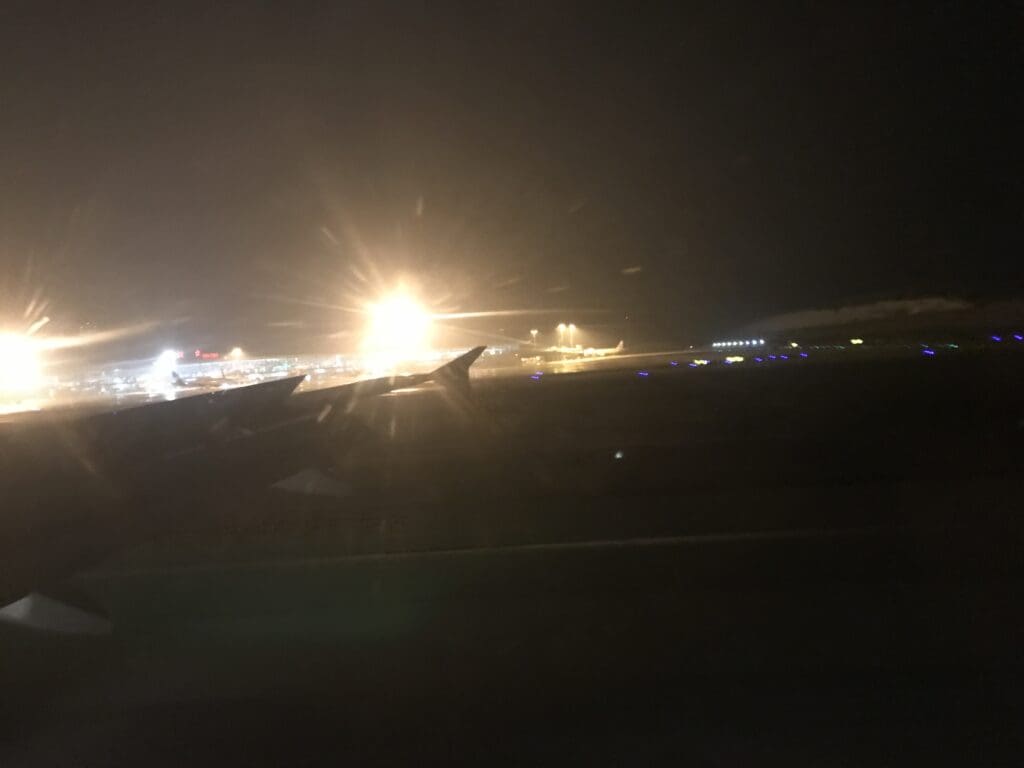
Following an automated approach announcement in Mandarin, English and Korean, the aircraft sank below the clouds before the flaps and landing gear were extended. As we neared the airport, lights of several towns, villages and roads came into view and before I knew it the aircraft was making a rather harsh touchdown on Yantai Penglai Airport’s Runway 05 which was followed by some gentle braking. As the aircraft exited the runway, this was immediately joined by a follow-me car which guided the jet towards one of the nineteen jetbridge equipped gates at the regional airport’s fairsized terminal. As the aircraft made its short journey to the terminal, I caught my first glimpse of a rare Xian MA60 operated by Chinese airline Joy Air (a type I would fly several weeks later!). Meanwhile, as the aircraft neared the terminal, an automated post-landing announcement was made in Mandarin, English and mistakenly, Japanese. However, having realised their mistake, the crew cut this off half way through.
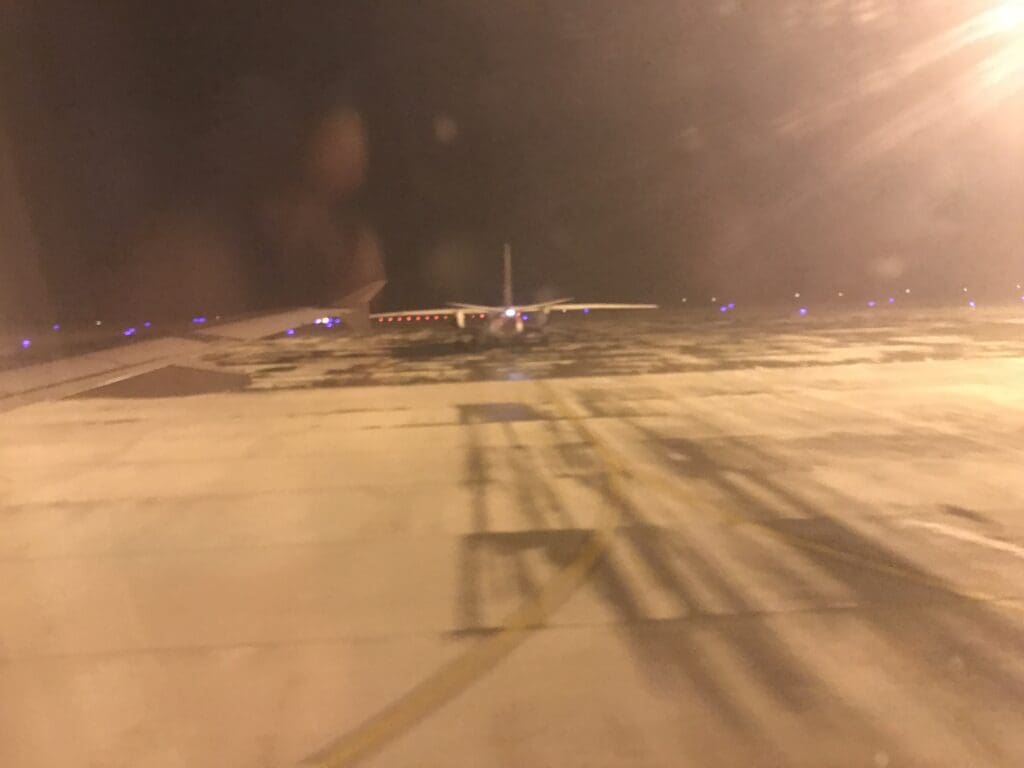
A little over an hour after departing Incheon, the Airbus A320 cautiously pulled into Stand 103 and the engines spooled down. However, after coming to a halt, it took some time for the main cabin door to be opened and for disembarkation to commence. Eventually, I made my way to the front of the cabin, thanked several crew members and stepped onto the freezing cold unheated jetbridge and into the new and modern terminal. From the aircraft, it was a very short walk to immigration and, seeing as this service was the only international arrival at that time, and, given the fact that most onboard the flight were Chinese citizens, once I had picked up and filled in an arrival card, virtually no waiting was needed whatsoever. All in all, my journey from the aircraft to the landside area of the terminal took no more than five minutes, leaving me with little to complain about regarding the international arrivals process at Yantai Penglai Airport.
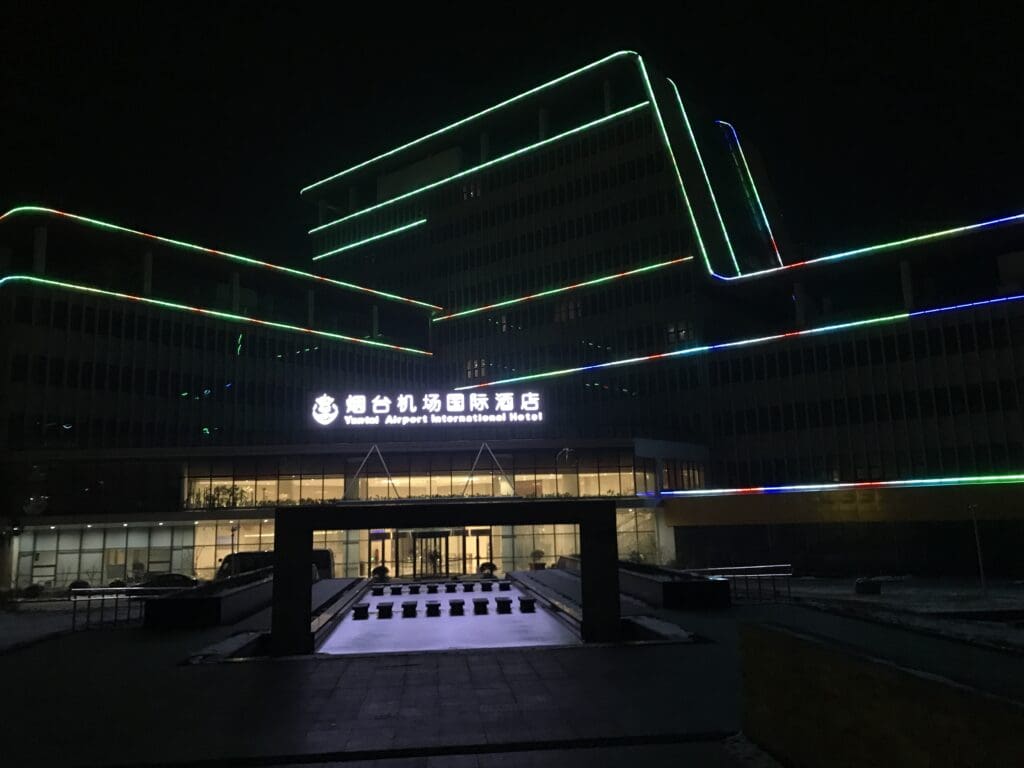
Flight 2: Yantai Penglai to Shanghai Pudong
Following a short night in the airport hotel, the time came to commence my trek to Japan. Seeing as my flight to China’s largest city was scheduled to depart at 0755, I decided to wake up nice and early well before sunrise. Despite the hotel being no more than a ten minute walk away from the terminal, I left the warmth and comfort of my rather luxurious hotel room and made my way out into Shandong’s sub-zero temperatures at 0525. Whilst this may seem a little over the top seeing as I would be departing on a domestic service, less than a year earlier I had almost missed my flight from Urumqi to Beijing, despite arriving with two hours to go until departure. Aside from almost slipping on a rogue patch of ice, my journey to the terminal was mostly uneventful and I soon found myself safe in the warm comfort of the ground floor arrivals level. As with most airports and stations in China, once inside I was required to pass through a security checkpoint, although this was a quick and easy experience that left me with few complaints.
Once inside, I headed up the escalators and found myself standing in the terminal’s busy and fairly large check-in hall. Having had enough queuing to last a lifetime at Incheon Airport the previous day, I was pleased to find that queues could only be seen at Shandong Airlines’ check-in island, whilst the other island for those departing on services operated by all other airlines was almost entirely devoid of passengers. Walking straight up to the desk, I handed over my printed itinerary to the somewhat robotic staff member and requested a window seat for both legs. Following the usual typing, two Yantai Penglai Airport branded boarding passes for my next two legs. With these in hand, I had no reason to remain airside, especially given the lack of facilities and airside views in this part of the terminal, I thus decided to continue on my journey and made a beeline for the security checkpoint.
Following a short queue, my boarding pass was scanned and stamped, and my passport was checked, before I reached the security check. Following a thorough security check, within fifteen minutes of walking into the terminal, I made it into the large, spacious and modern airside departure area. Having a quick walk around, I spotted a good number of shops selling a wide array of items, including local specialities and souvenirs. Looking outside, it was clear that local carrier Shandong Airlines rule the roost in Yantai, with almost every gate filled by one of the airline’s Boeing 737-800 aircraft. As time passed, inside, the terminal became increasingly busy as the morning rush commenced, although I should mention that the waiting area never seemed to become crowded and throughout my stay I noticed plenty of places to sit down and wait. In spite of the fact that I appeared to be the only foreigner in the terminal that morning, aside from Mandarin all the automated announcements were conducted in English and Korean, with these two languages also present on most signage throughout the terminal. Exploring the terminal further, I eventually paid a trip to one of the multiple toilet blocks which I was pleased to find in a good condition, although I was a little disappointed at the total lack of soap. Visiting another block on the other side of the terminal before boarding, I found the exact same problem there too.
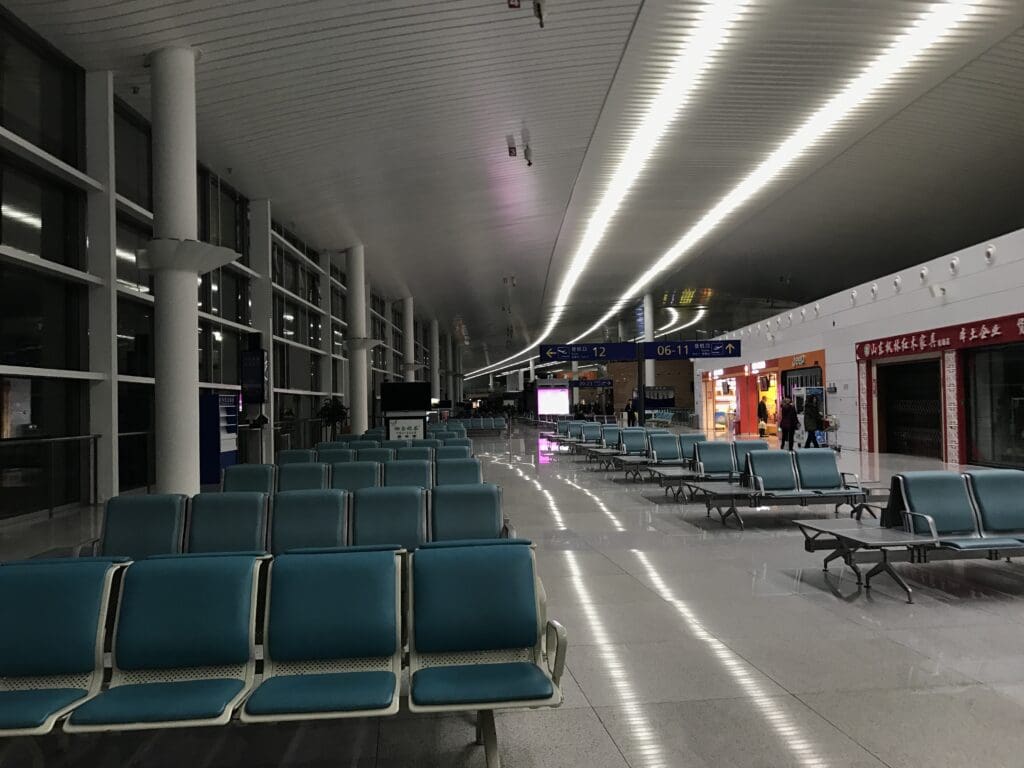
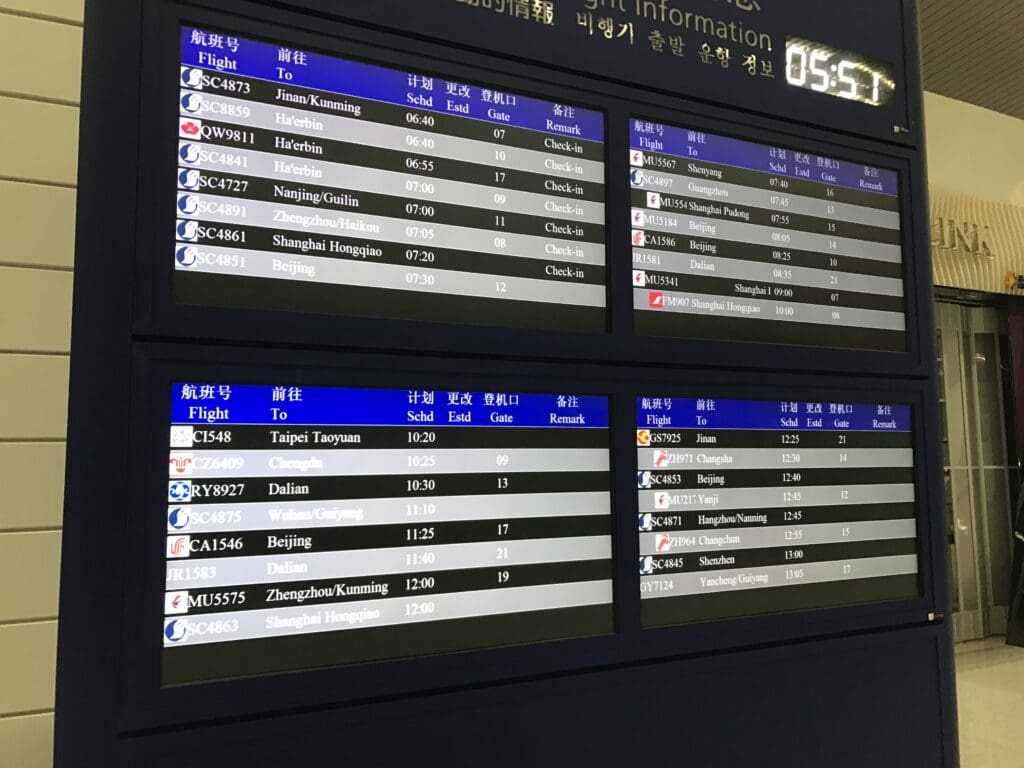
As I waited, the skies brightened and transformed to today whilst one by one, the fleet of Shandong Airlines Boeing 737-800s outside pushed back and commenced their journeys to destinations across China. Meanwhile, that morning all aircraft outside were operated by Chinese operators, except for an Air Incheon Boeing 737 Freighter that touched down at around 0700 after its short flight from Seoul Incheon. With my flight’s scheduled boarding time rapidly approaching, I made the short walk up to the far end of the terminal where a host of non-Shandong Airlines aircraft could be seen huddling. These included a trio of China Eastern Airlines Airbus A320s alongside a Qingdao Airlines Airbus A320 preparing to depart for the city of Harbin.
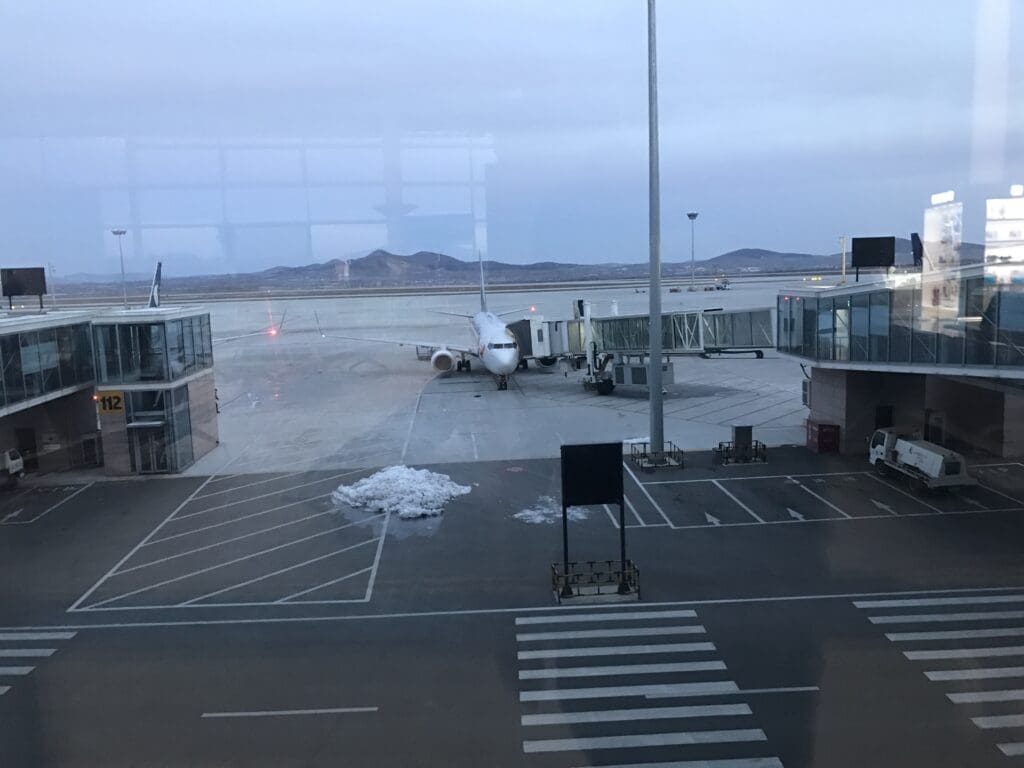
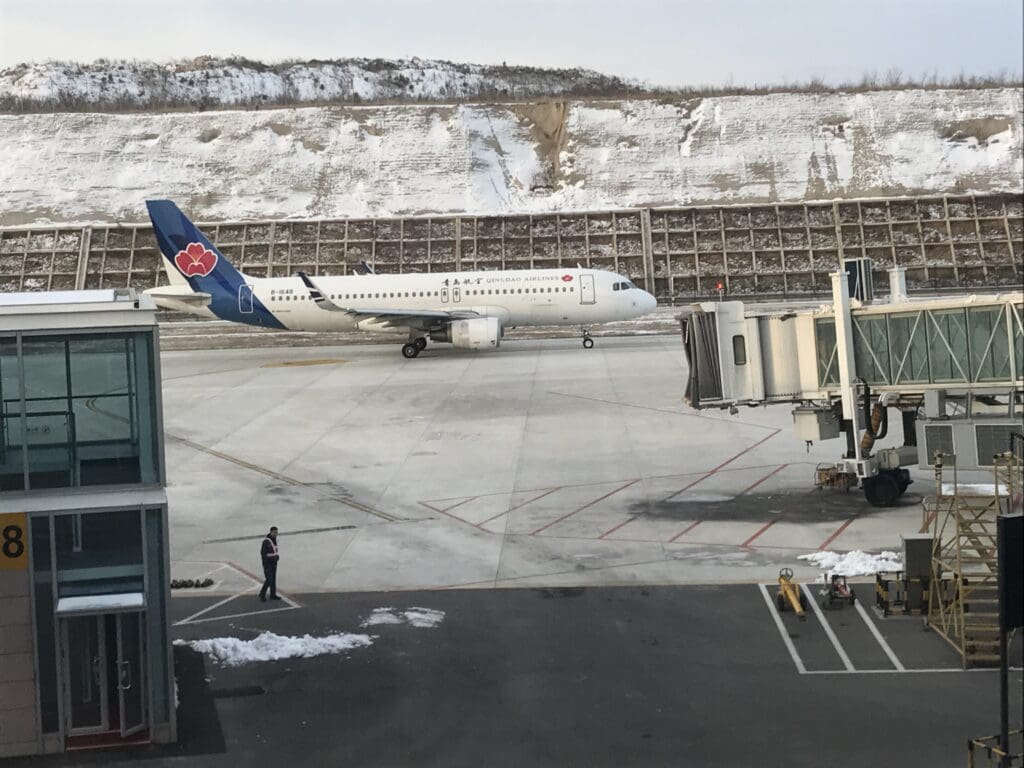
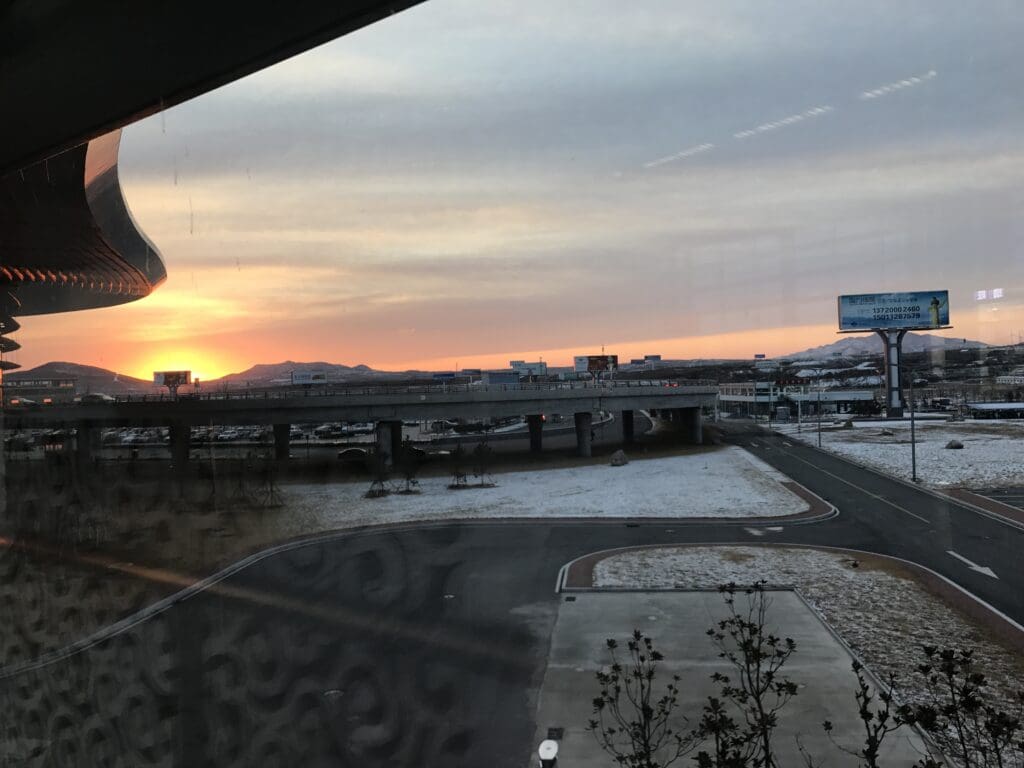
Looking outside, the aircraft that would take me down to Shanghai Pudong could be seen being readied at Stand 115. Sporting China Eastern Airlines’ classic livery, this came in the form of sharklet-fitted Airbus A320-232, B-9972. Unlike the Airbus that I had flown the previous day, this one had not been made locally and was instead assembled at Airbus’ plant at Hamburg Finkenwerder where it took to the skies with the test registration of D-AXAO in October 2013. This made it around three and a half years old at the time of my flight.
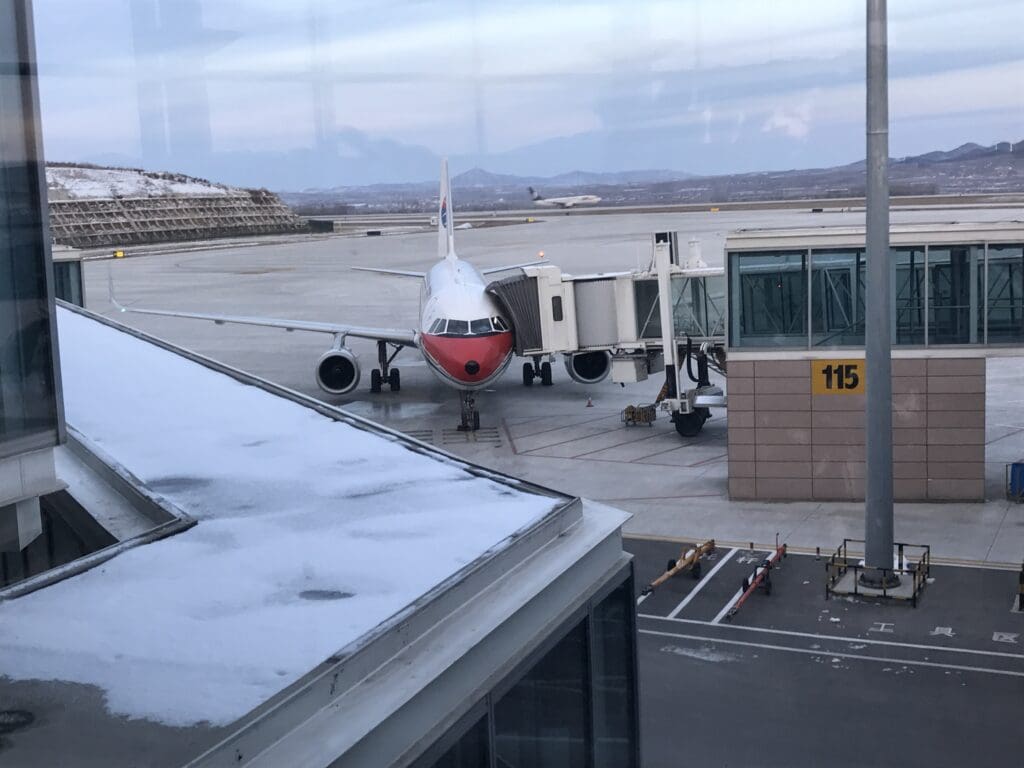
At exactly 0720, the gate agent made an announcement in Mandarin and English inviting Business Class passengers alongside those requiring assistance to make their way onto the aircraft. A few minutes later, all Economy passengers were invited to board and I soon joined the short queue before having my boarding pass scanned and wandering down the jetbridge to the waiting Airbus. Once again, this aircraft featured a ‘Welcome’ carpet in the forward galley and as soon as I stepped into the aircraft, I was greeted in English by two crew members although admittedly they did so without a smile or even displaying any sort of emotion! Voyaging into the cabin, I found the aircraft to be almost identical to the one that I had flown from Korea the previous evening, although delightfully, this was in a slightly less battered condition. Turning to the seatback pocket, this contained a copy of the safety card and China Eastern Airlines’ shopping catalogue, however, this lacked China Eastern Airlines’ magazine and the Civil Aviation Authority of China inflight magazine, both of which had been present on the previous flight. Fortunately, seeing as this was a relatively short flight, it was unlikely that I would require any light reading to keep me entertained on the journey down to Shanghai.
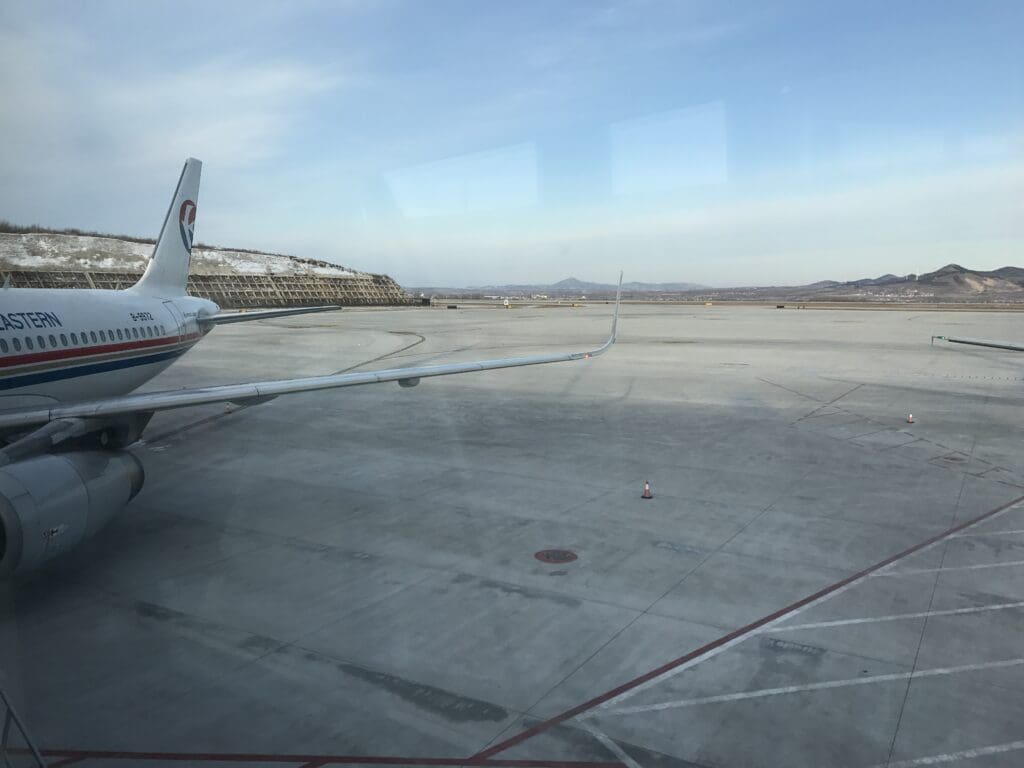
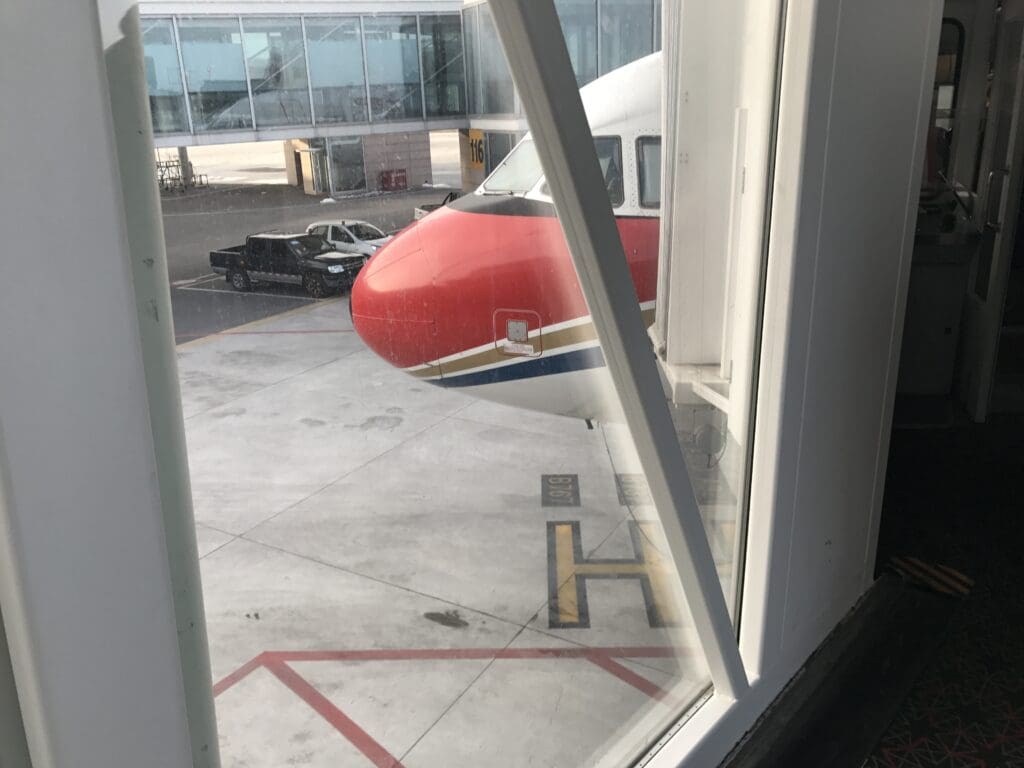
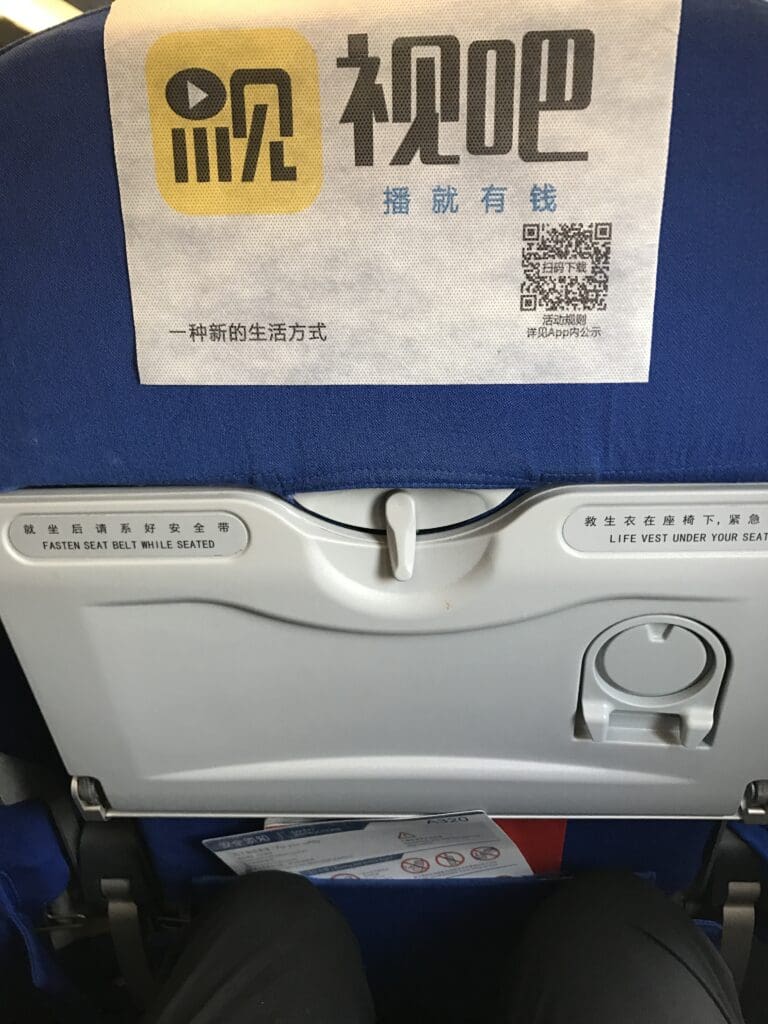
Boarding was completed only sixteen minutes after this had been announced in the terminal, and that morning the flight appeared to be around 75% full, with the middle seat in between myself and a passenger dressed in a smart suit remaining empty. Perhaps unsurprisingly seeing as this was a morning service to Shanghai, many of those onboard were smartly dressed in business attire and thus appeared to be flying for work. Despite the quick end to boarding, the aircraft remained at the gate until our scheduled departure time neared. During this pause, little happened in the cabin aside from the broadcast of several pre-recorded announcements. These took the form of a security announcement requesting passengers to behave appropriately and another advertising the possibility of upgrading to Business Class for a fee. Once both of these had been concluded, the overhead screens dropped down and the long safety video was played in Mandarin and English.
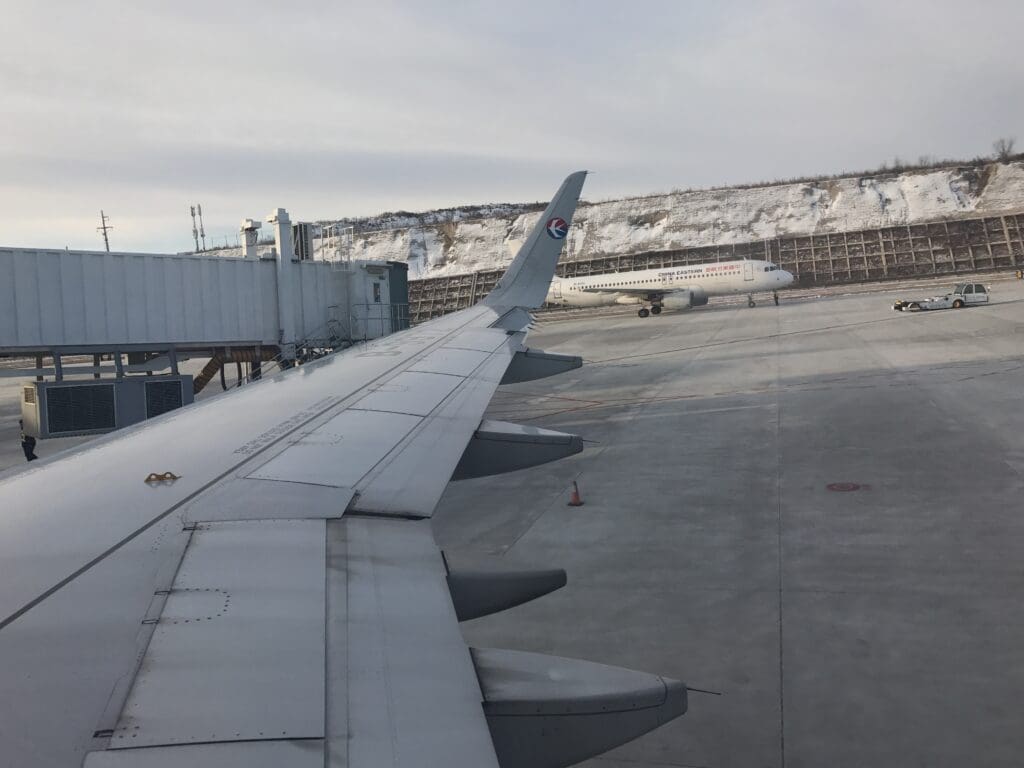
At 0753, the aircraft was pushed back from Stand 115 as the crew passed through the cabin undertaking their final pre-departure checks and preparations. Once the aircraft came to a halt, the two engines made a relatively quiet yet smoky start-up and soon enough, the aircraft made a quick taxi over to Runway 05. After holding for a few minutes in order to allow for a sleek and modern Gulfstream G550 to land and vacate the runway, at 0807, the Airbus headed onto the runway and commenced a powerful and short rolling takeoff. As we rocketed into the sky, I was treated to a good birds eye view of the airport’s large terminal which was soon replaced by the sight of the snowy rural landscapes of central Shandong. Following our departure, the aircraft initially flew northeast along the coastline, however, several minutes later, the aircraft turned southwards in order to point us in the correct direction for Shanghai.
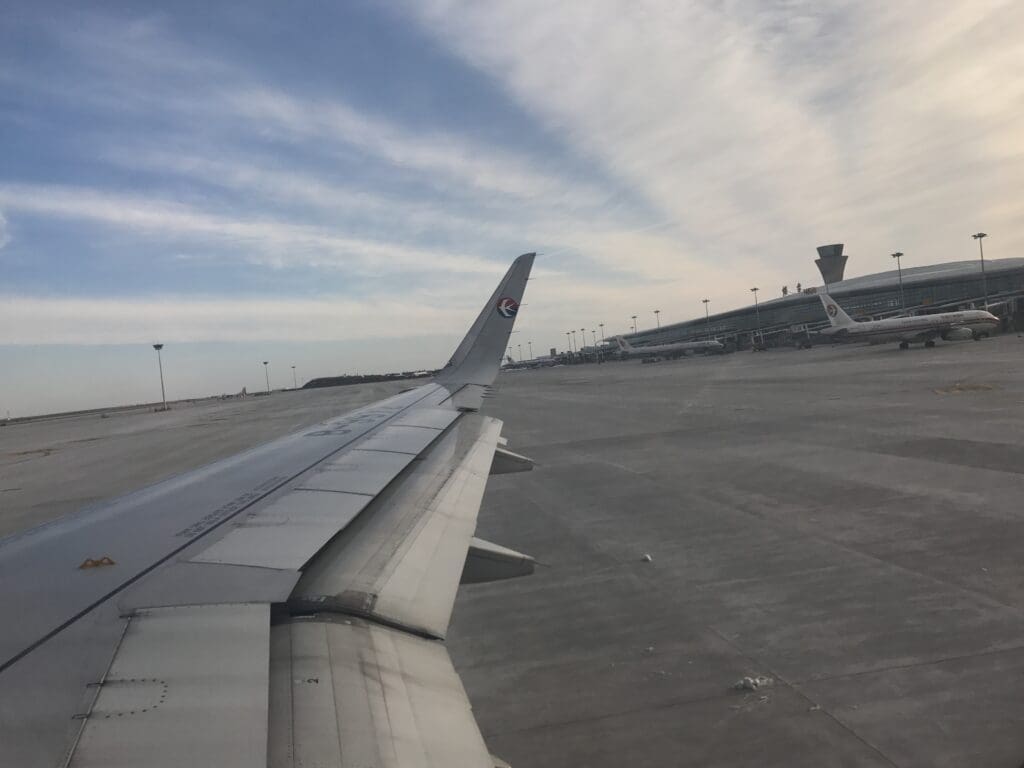
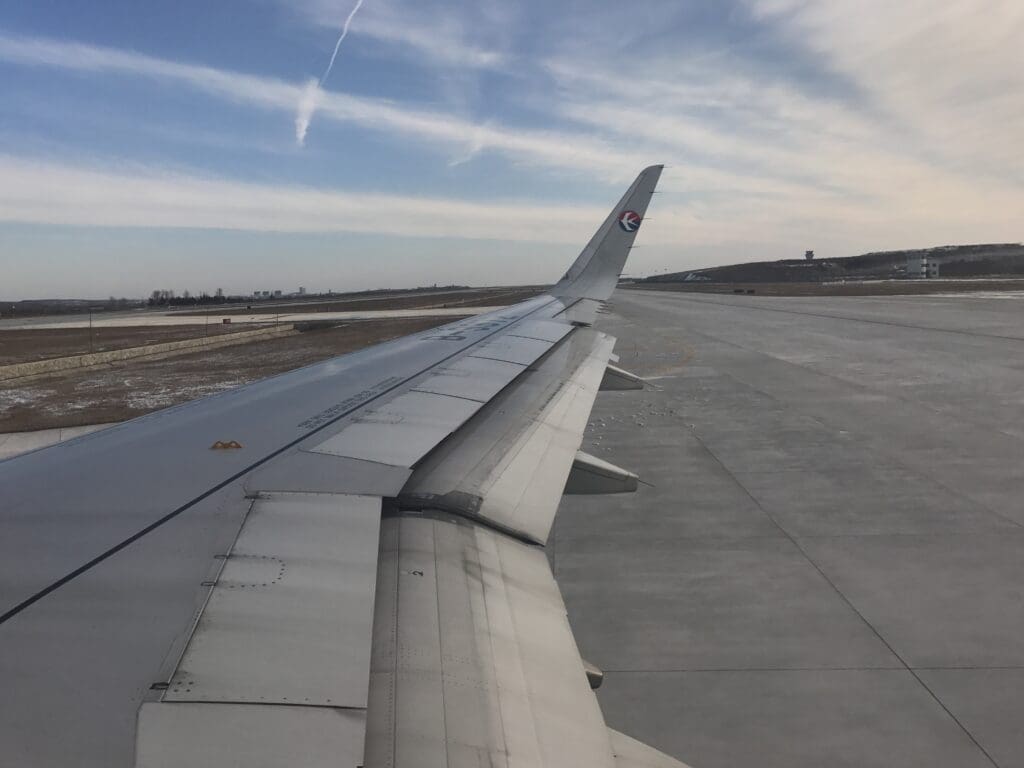

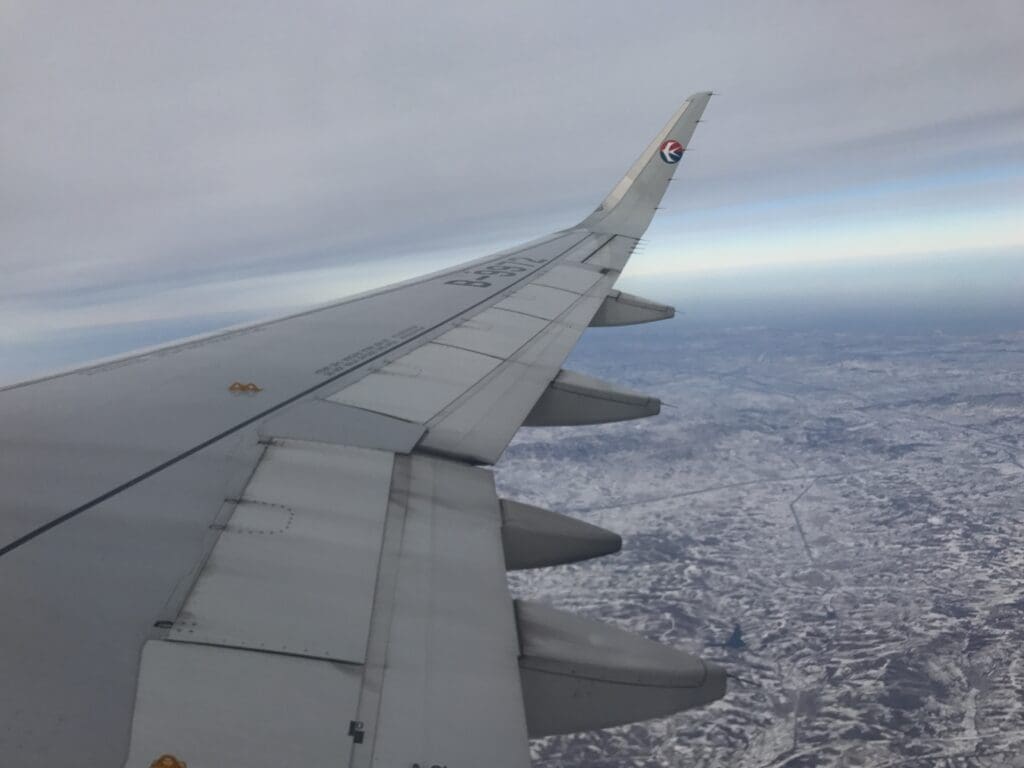
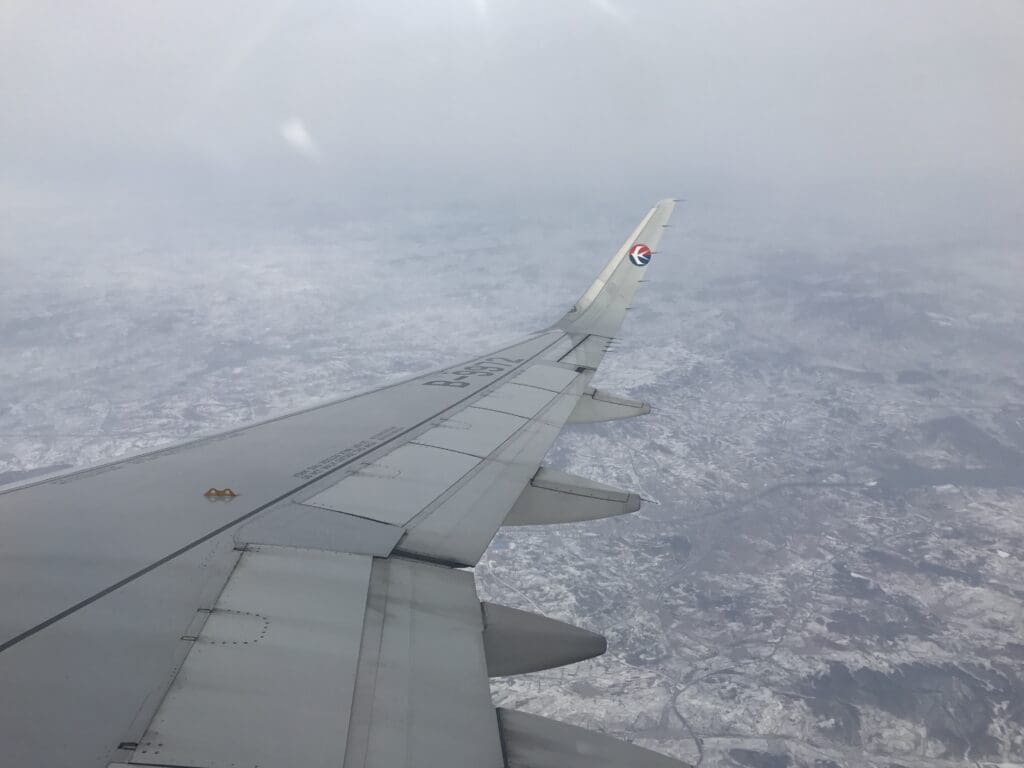
Around fifteen minutes after taking to the skies, the overhead screens lowered and played a similar selection of short clips as had been broadcast on the previous flight. Meanwhile, once the aircraft reached cruising altitude, the inflight service commenced and I was soon handed a box which contained apple chips, nuts, a small cold bread roll and a piece of sponge cake. Whilst a seemingly decent selection of drinks were offered, I opted to keep things simple and paired this with a small cup of orange juice. Soon demolishing this offering, I temporarily drifted off to sleep and by the time I woke up, the aircraft was sinking down into the white clouds of smog that surrounded Shanghai that morning.
As the aircraft neared Shanghai, the aircraft undertook several turns at which point the crew passed through the cabin ensuring all was in place for our arrival. Eventually the ground beneath the aircraft became visible, taking the form of a mixture of fields, construction sites and industrial zones before the flaps were extended, slowing the aircraft down with some vigour. Within a few minutes, signs of the airport came into view, which commenced with glimpses of Comac’s facilities and their brand new C919 airliner which would make its first flight several months later. After 1H20 in the air, at 0927, the Airbus A320 made a gentle touchdown on Shanghai Pudong’s Runway 34R before gently decelerating. Once off the runway, the aircraft commenced a long twenty minute taxi to Terminal 1 where it eventually pulled up to Stand 8.
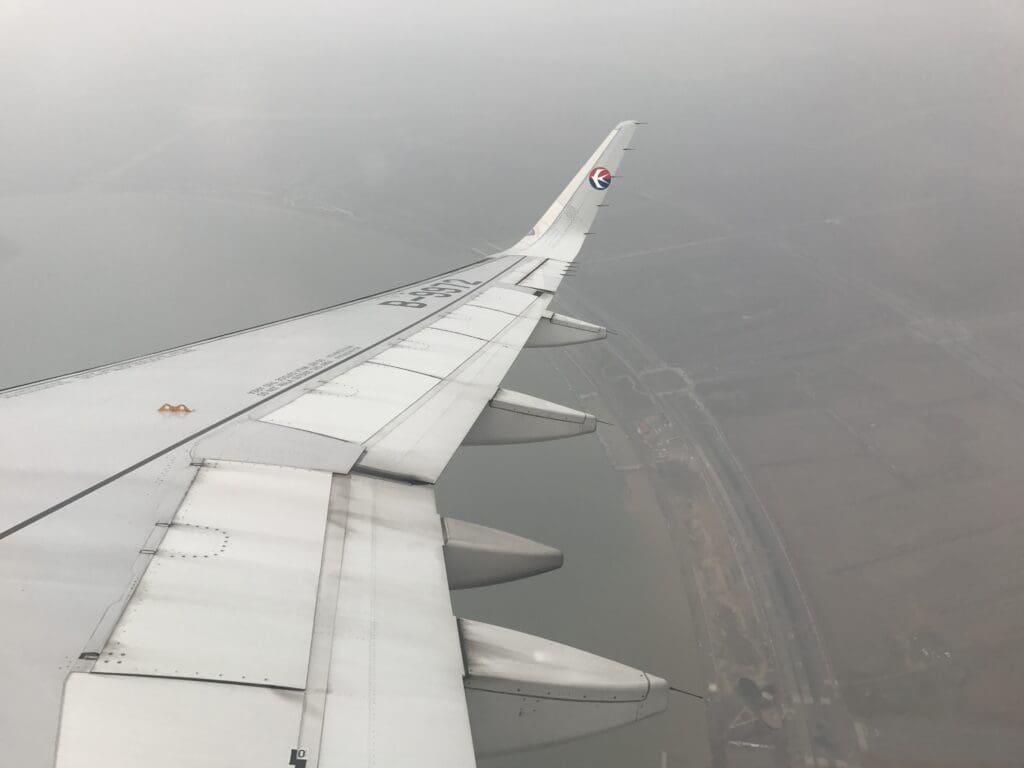
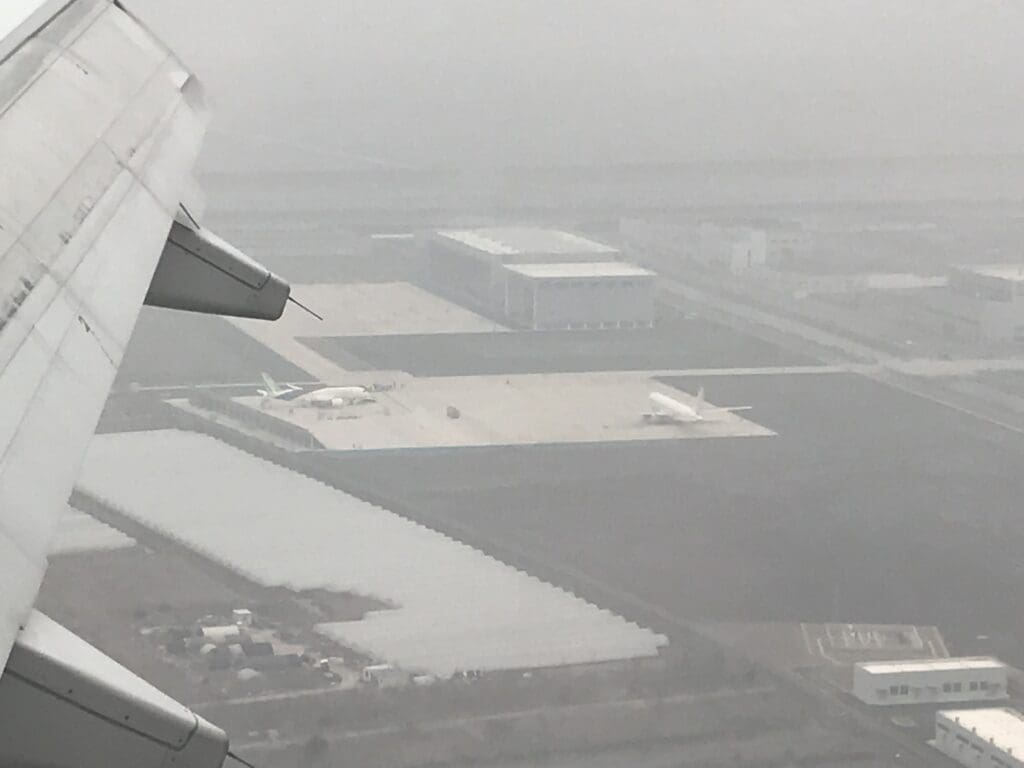
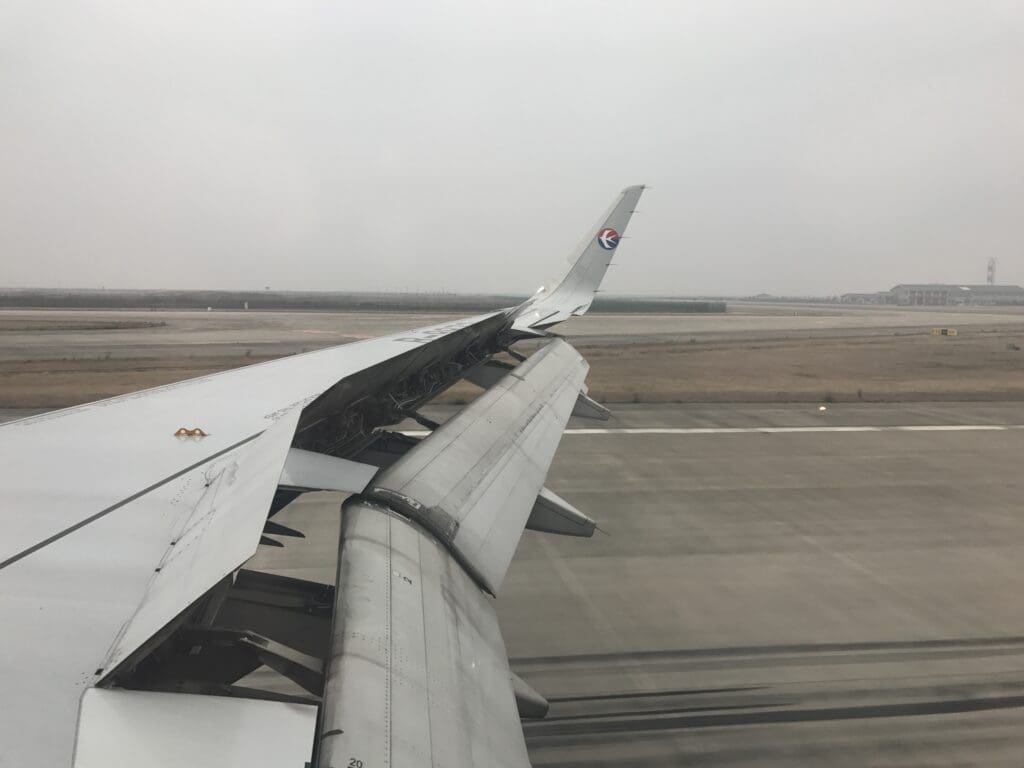
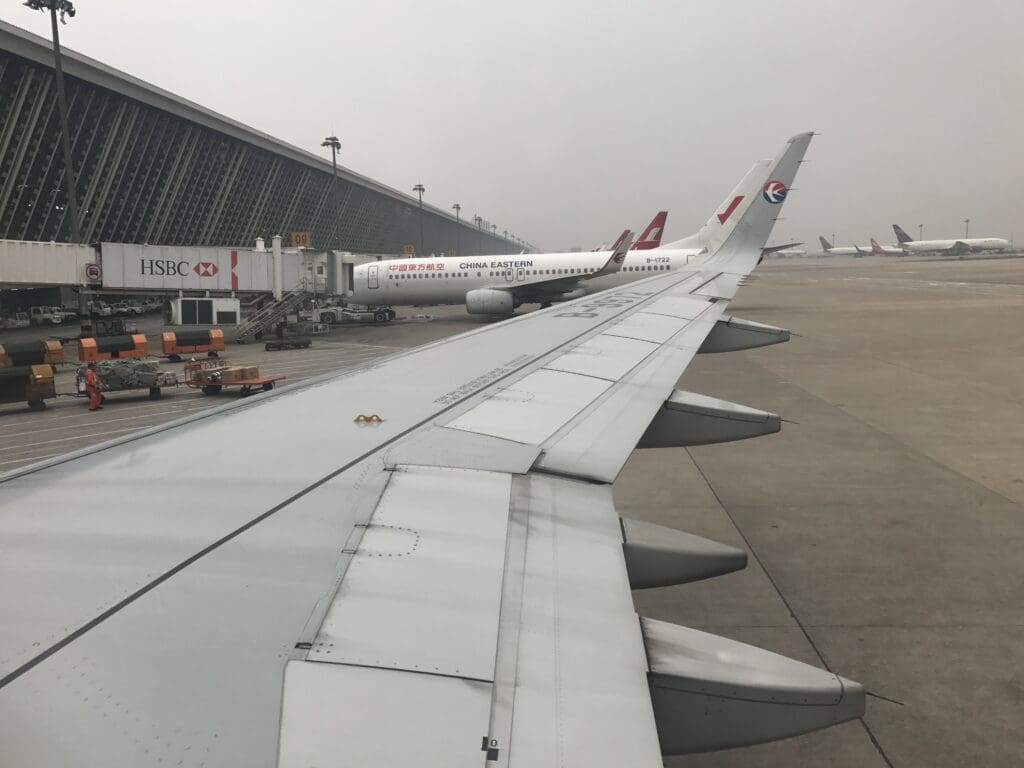
Upon arriving at the gate, the main cabin door was promptly opened and I was soon off the aircraft. From our arrival gate, it took some time to pass through the arrivals area and head back upstairs to departures where I soon joined the long line for immigration. Fortunately, this moved surprisingly quickly and eventually I met a stony faced immigration officer. Fortunately, they were not too puzzled by my unusual routing and after the usual inquisitive and suspicious glances, I was permitted to head through to the security area. As was the case in Yantai, this check was rather thorough, however, the lines here went down quickly and it took approximately forty minutes to emerge in the international airside area of Terminal 1 after disembarking the Airbus A320 that had delivered me from Shanghai.
Flight 3: Shanghai Pudong to Naha Okinawa
Serving as the starting point for flights to destinations across the world, that lunchtime, the airside area of Shanghai Pudong’s Terminal 1 was fairly busy. However, throughout my stay, I faced no difficulties in finding a free space to sit and wait. For aviation enthusiasts, whilst the terminal’s design makes decent photography somewhat challenging, once airside, most areas offered good views of the fine selection of aircraft waiting outside at the terminal’s gates. Importantly, the terminal appeared to be in a reasonably clean and tidy state, whilst the complimentary wifi network worked well. Unlike my experience at many other airports in China, no local phone number was required in order to connect to this and surf the web. Last but not least, as one would expect from a major international airport terminal, inside, plenty of shops and eateries could be found, the latter including a mixture of both local and international chains.

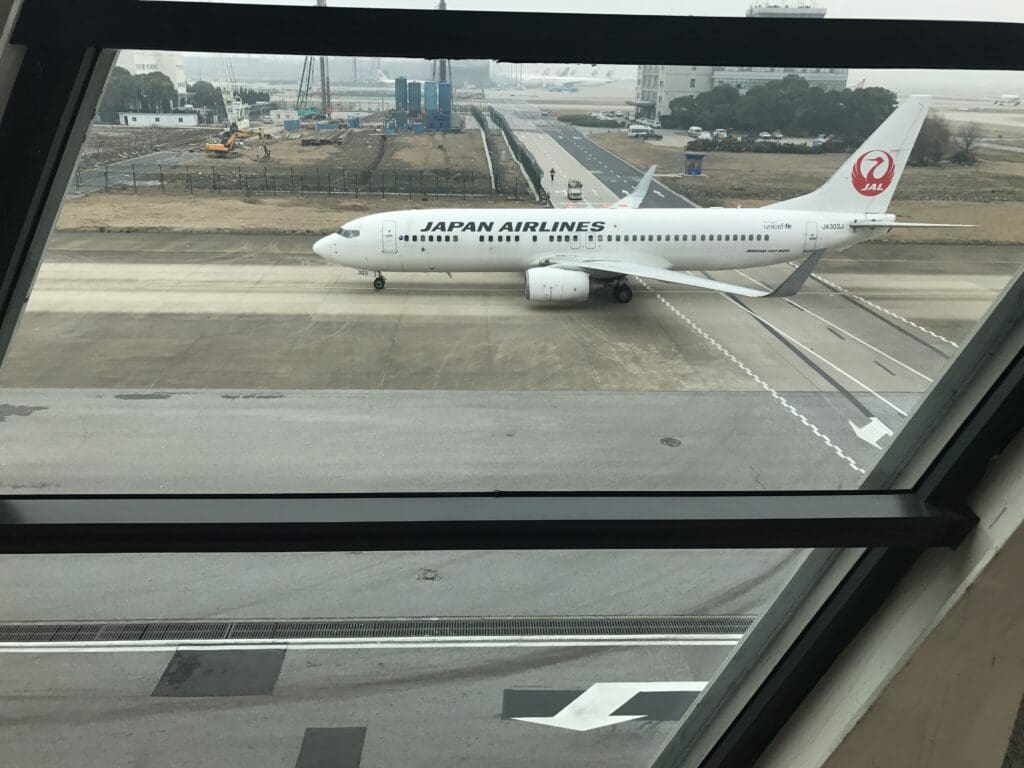
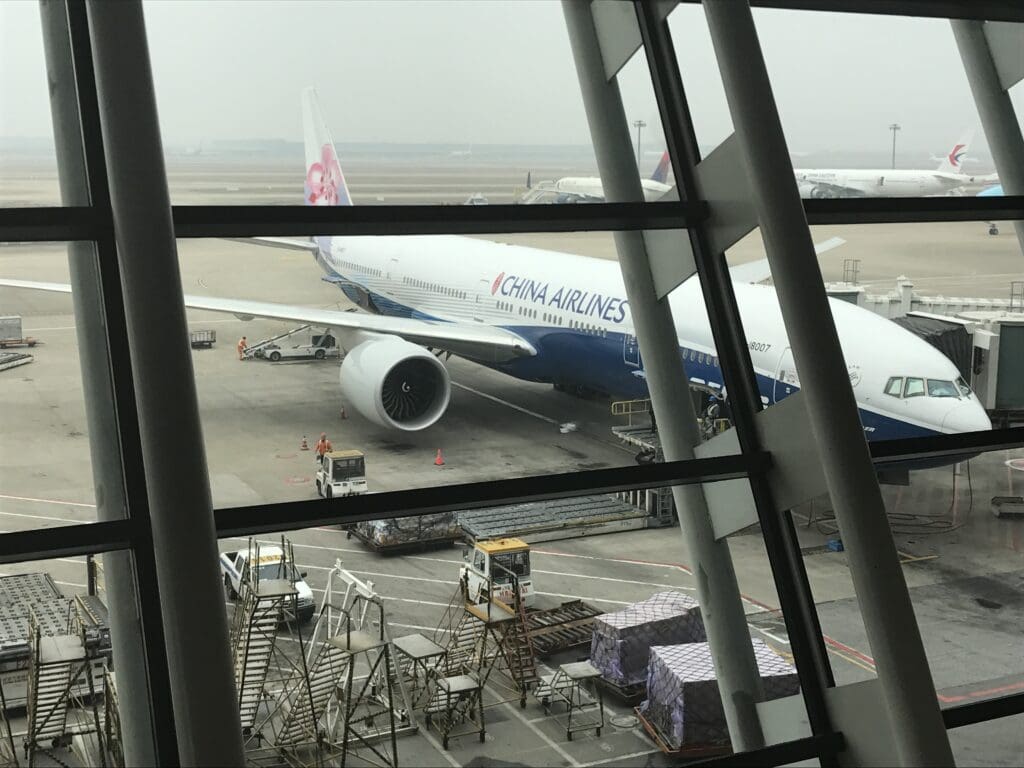
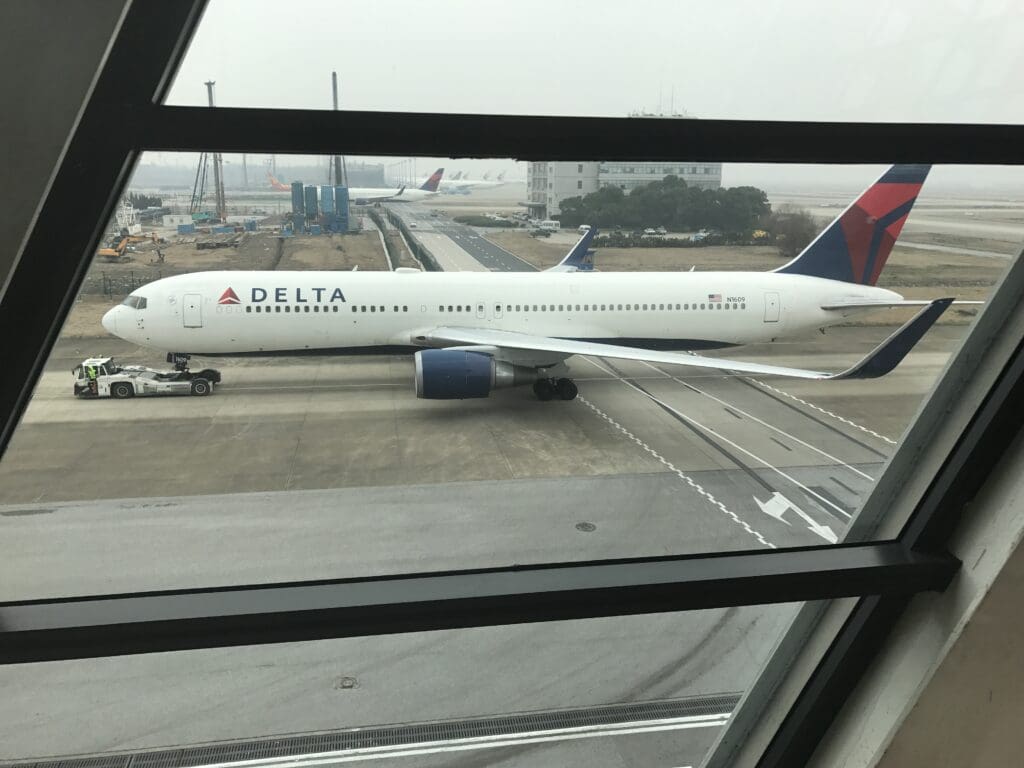
Plonking myself down near a window, I gazed out at the smorgasbord of airliners from across the world before continuing on my journey. That afternoon, my flight was scheduled to depart from Gate 210, and, following signs for this, I was taken down a flight of escalators and ended up at a bus boarding gate. Upon arriving there ten minutes before boarding was scheduled to commence at 1225, I was surprised to find nothing more than a small handful of passengers waiting, giving me hope that it would be a quiet flight over to Okinawa. As the clock struck 1225, an announcement was made in Mandarin and English, with all passengers invited to board the waiting bus at once. Joining the short queue, my boarding pass was scanned and my passport checked before I was free to head onto the bus. Being in the first cohort of passengers to board the bus, once onboard, a good twenty minutes of waiting was in store before the doors closed and the bus headed out for a quick tour of the ramp.
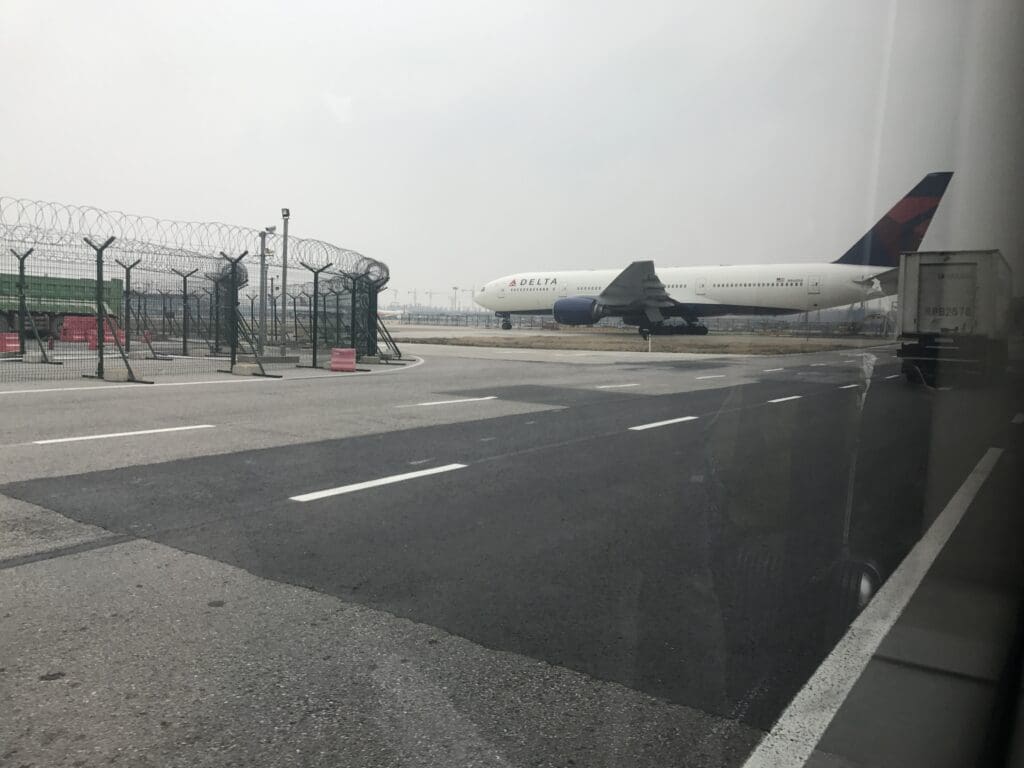
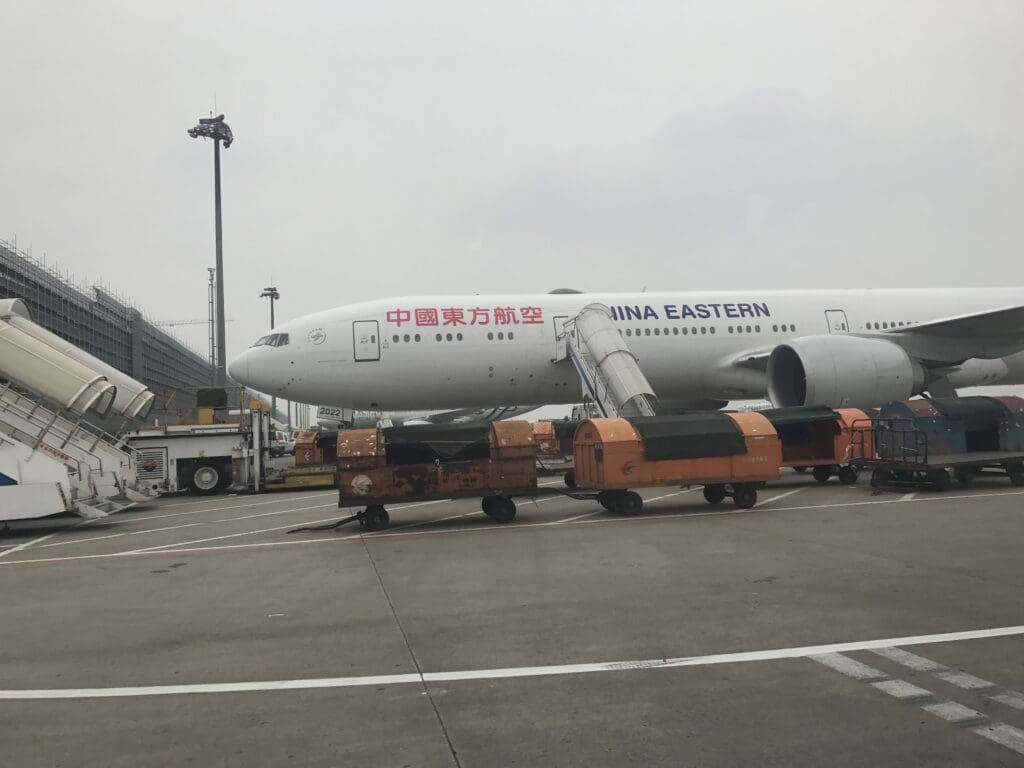
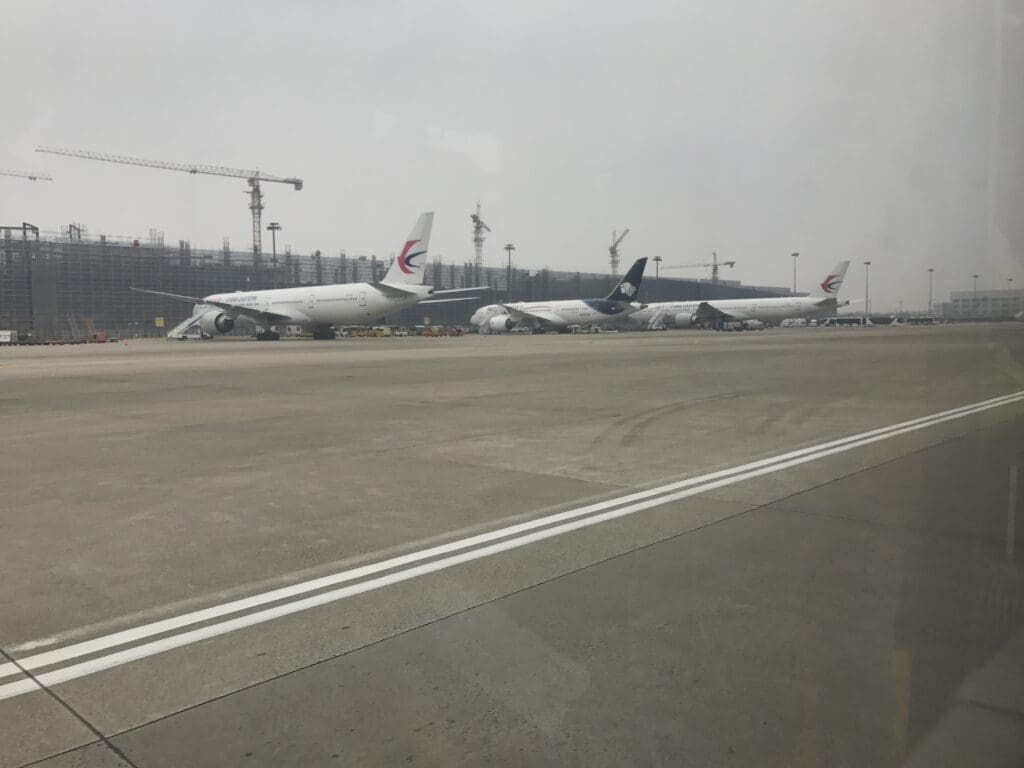
After several minutes, the bus pulled up to a non-sharletted Airbus A320 proudly draped in China Eastern Airlines’ old colour scheme. This particular aircraft took the form of B-6892, a Toulouse-built Airbus A320-214 that had first taken to the skies in March 2012, making it very nearly five years old at the time of my flight. As the doors opened, passengers spilled out onto the apron and a short wait was required on the airstairs before I was able to head into the forward galley.
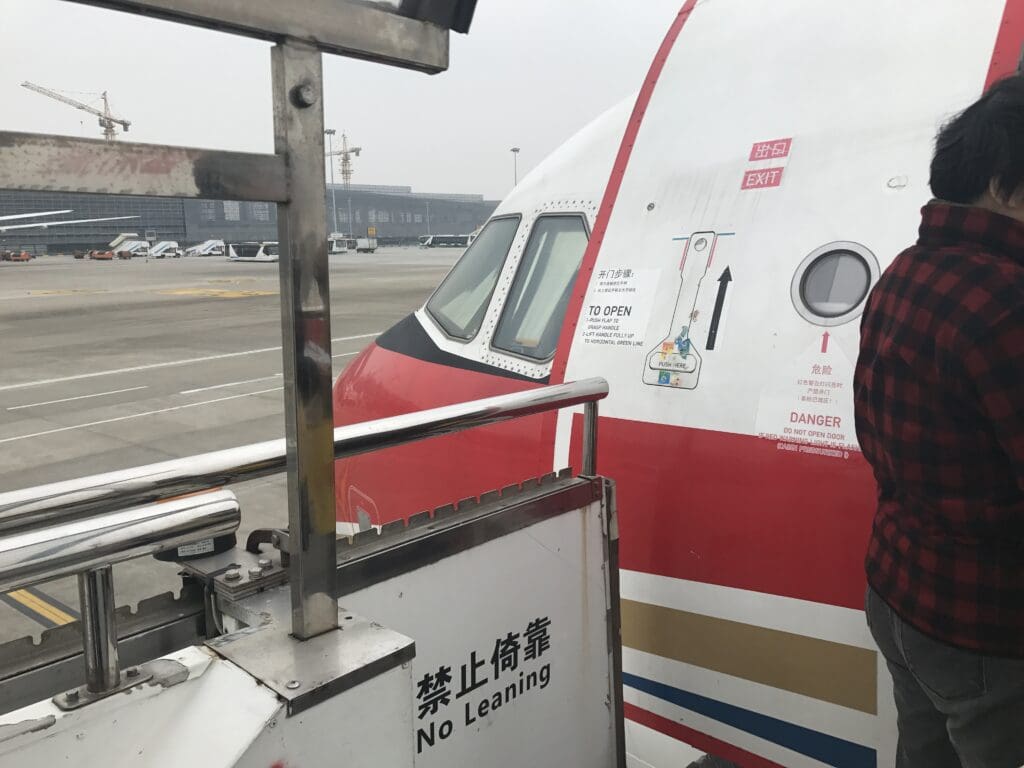
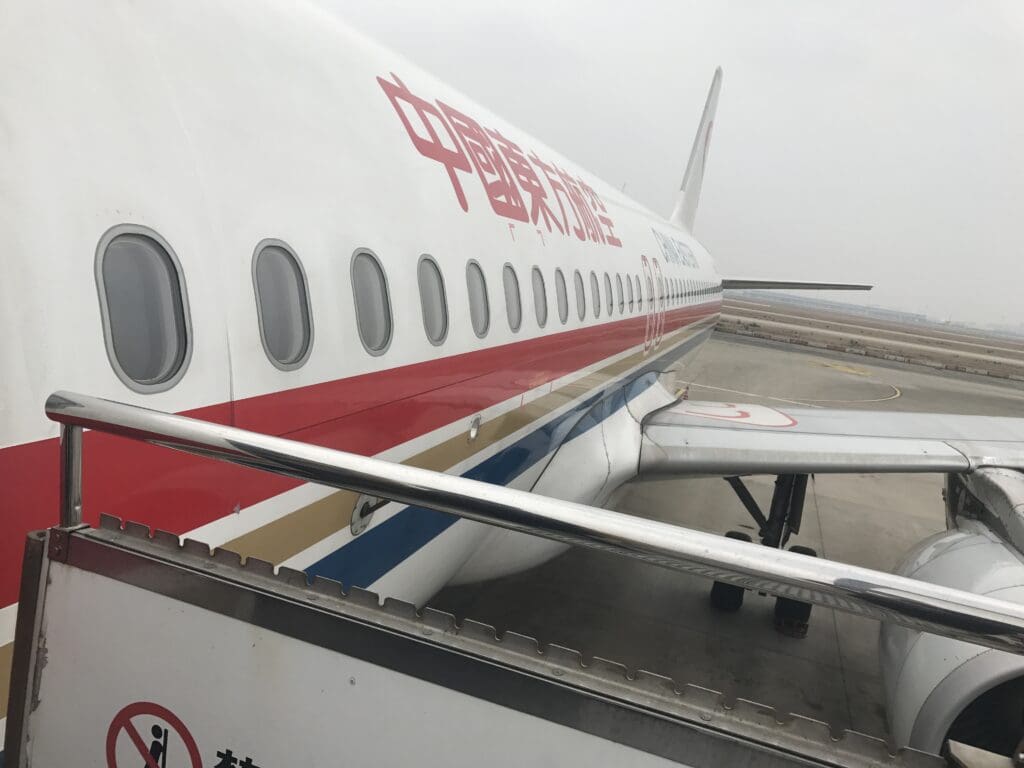
As I stepped into the aircraft, I received a warm welcome from the Purser before I turned right and entered the small two-row Business cabin. Unlike the other two Airbuses that I had flown, this jet featured China Eastern Airlines’ older cabin interior, with seats in Business covered in red fabric, whilst those in Economy featured dark blue fabric on which a repeating swallow pattern could be seen. Each seat featured a slightly classier non-disposable fabric antimacassar on which China Eastern Airlines’ logo could be seen, although once again, this also featured an advertisement, which promoted some sort of financial services platform. Meanwhile, stickers advertising a real estate development company could be found on the underside of each tray table.
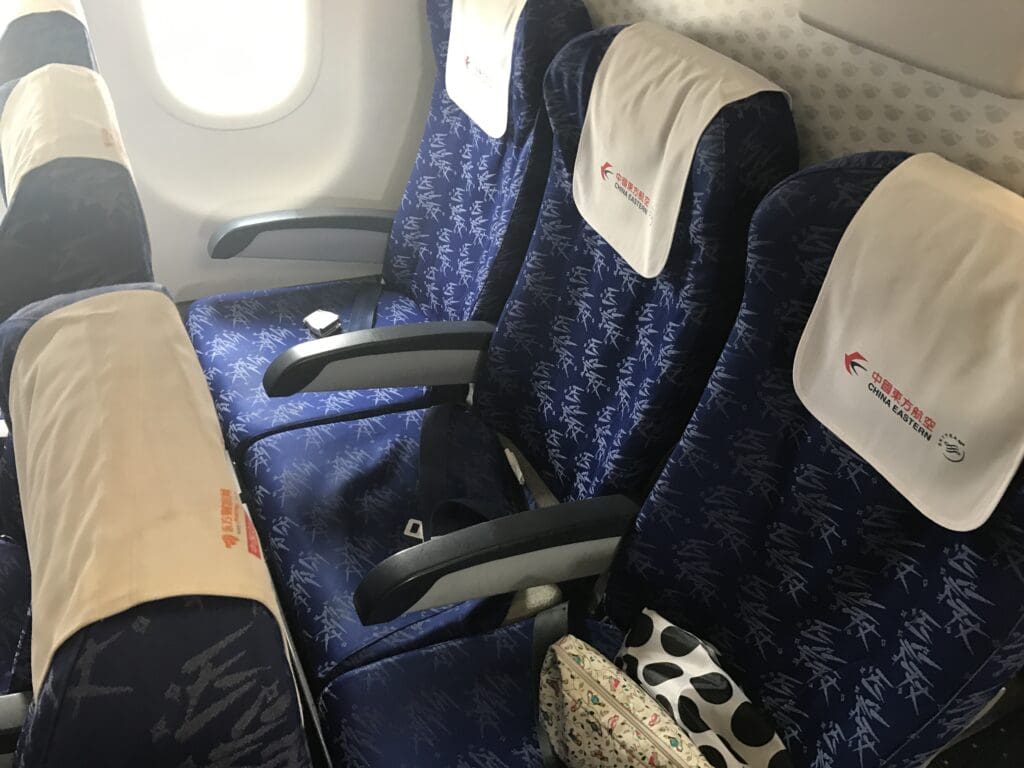
As I wandered down the cabin, I received another set of friendly welcomes from the two crew members that I passed during this journey and soon arrived at my seat, 42L. Once seated, I found this to be a little battered and worn, especially compared to the other two Airbuses that I had flown, however, this did seem to be marginally softer and more comfortable compared to the other two seats, whilst the legroom was perfectly sufficient for the flight over to Okinawa. Furthermore, this was in a clean and tidy state, other than the odd crumb and some chewing gum stuck to the carpet as I inspected the area around this. Turning to the seatback pocket, this contained a safety card and nothing else.
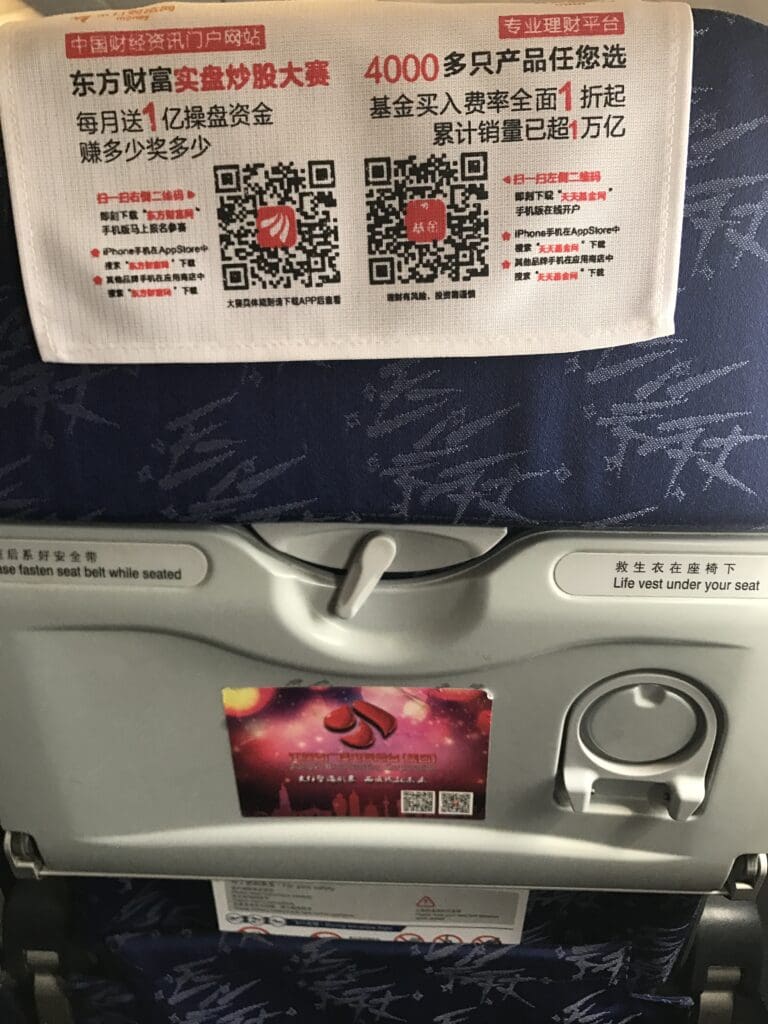
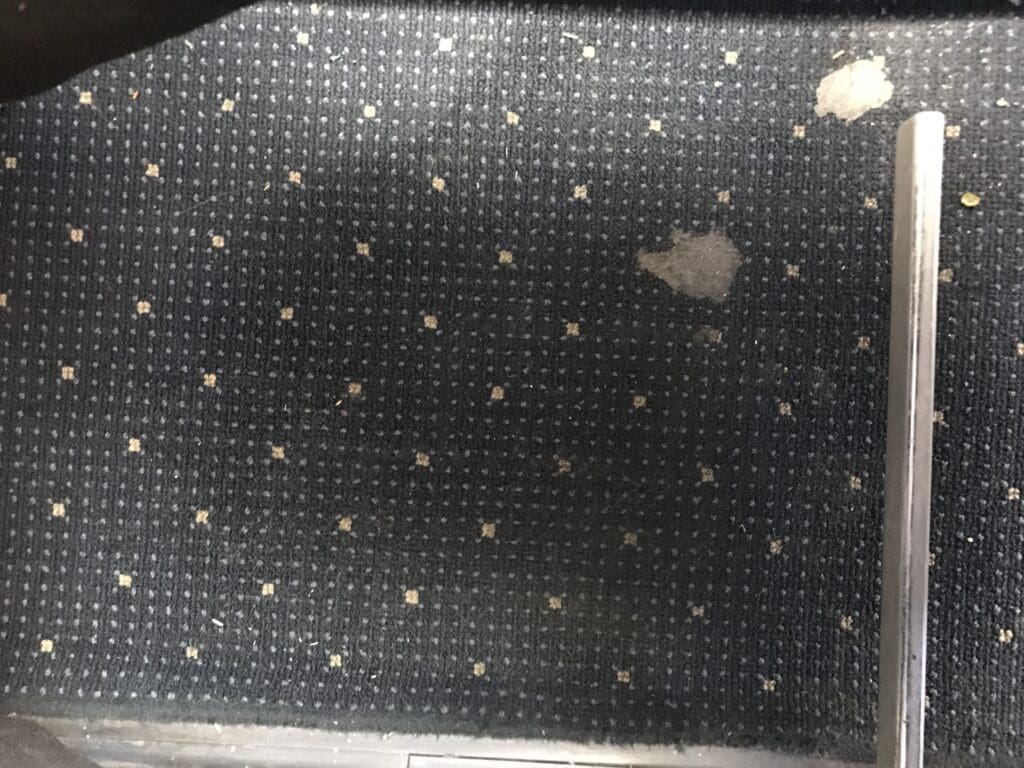
A short time after I had taken my seat, a near empty second bus appeared at which point I was joined by two seatmates. That afternoon, the flight was no more than 60% full, with most passengers appearing to be leisure flyers, a significant number of whom had arrived on China Eastern Airlines’ services from North America and had simply connected in Shanghai Pudong. Indeed, the airline frequently offers the cheapest means of travelling between Europe and North America, and Okinawa, and thus this was not overly surprising. As with Korean cabin crew on their flights between China and Korea, China Eastern Airlines hires local Japanese-speaking flight attendants to staff their services between China and Japan. Thus, three cabin crew members appeared to hail from China, whilst one hailed from Japan.
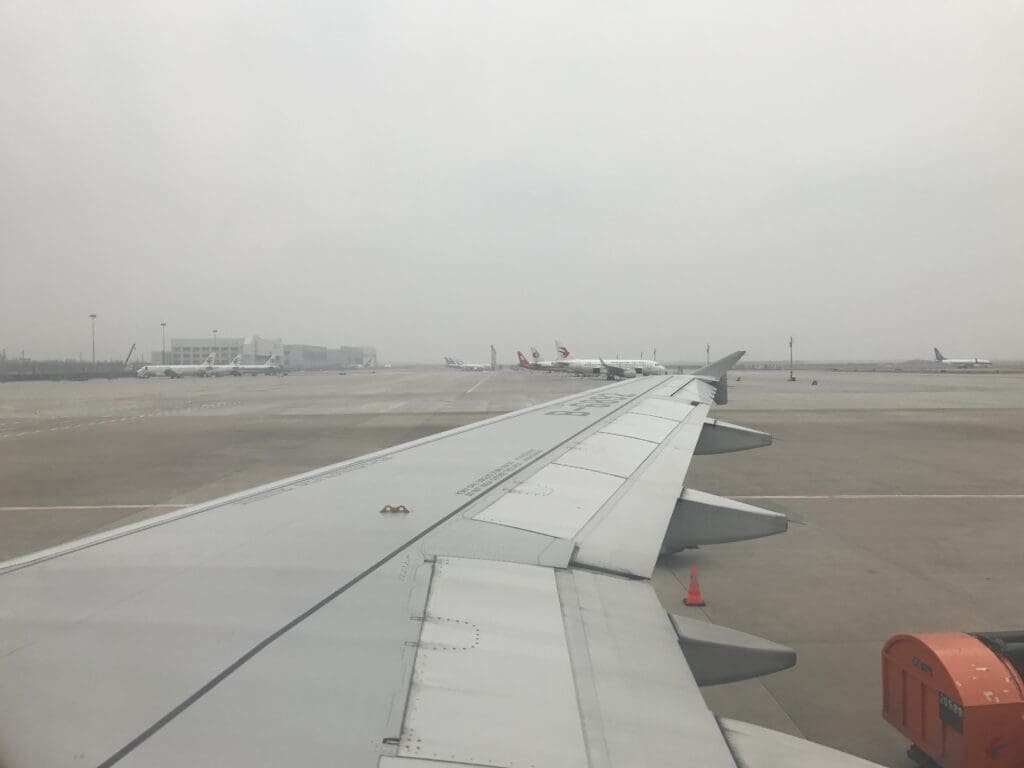
Once the two passengers next to me had strapped themselves in, the long series of pre-recorded announcements commenced and the aircraft was soon pushed back from its parking position. Once we came to a halt, the Airbus’ two CFMI CFM56-5B4/P engines hummed and whirred into life. A few minutes later, the Airbus powered forward and commenced its taxi to the runway. At this time, the overhead screens dropped down and commenced China Eastern Airlines’ long safety video in Mandarin, English and Japanese. Given Shanghai Pudong Airport’s size and its status as one of the world’s busiest airports, I had expected a rather long taxi and wait to depart, however, the aircraft taxied onto the runway only a few minutes after commencing its taxi where it performed a rolling takeoff. This meant that at this time, the Japanese version of the safety video continued to play on the overhead screens, with these not being retracted for departure.
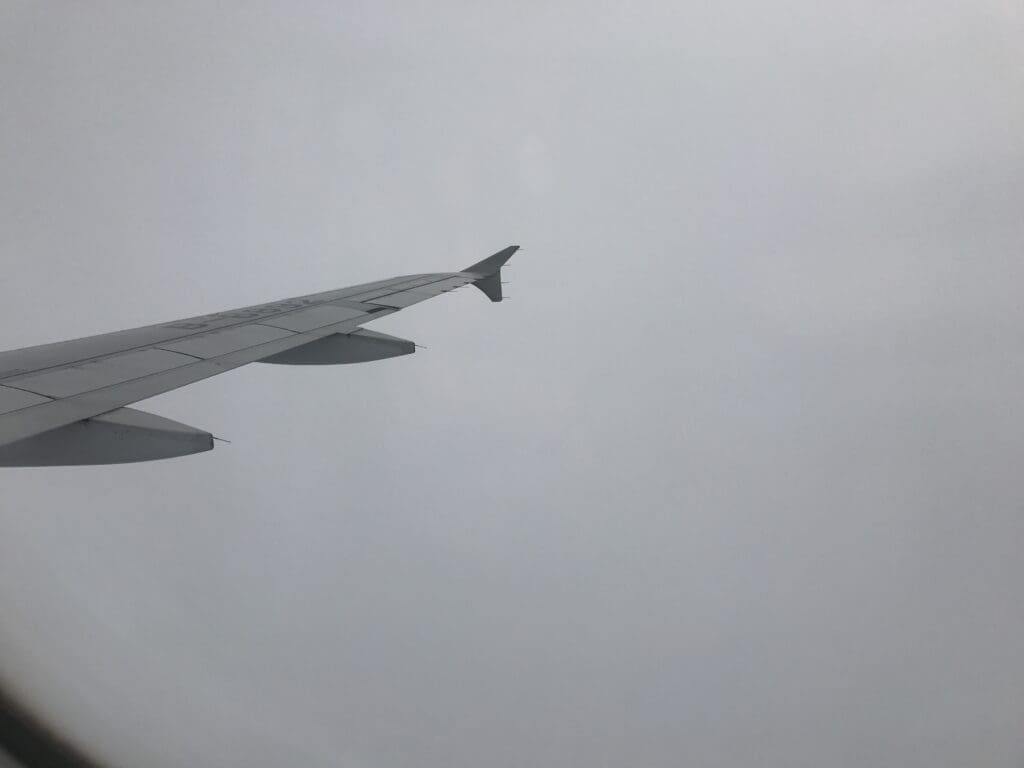
Soon enough, the aircraft rose above the smog and reached blue skies before levelling off at our cruising altitude. Seeing as the rear portion of the aircraft was almost entirely empty, at this time, I decided to migrate from 42L to 49L. Almost immediately after the seatbelt signs were switched off, the crew commenced their inflight lunch service. This consisted of a full meal with a main dish of pork fried rice (no other options were offered) alongside a piece of cake, biscuits, watermelon, apple juice and peanuts. In addition, two drinks rounds were also made which was rather nice given the comparitively short length of the flight. Furthermore, during this servie I found the two crew members who served me to be polite and friendly, thereby leaving me with no complaints about the level of service offered onboard. My only slight gripe was the fact that it ended up taking quite some time before the empty trays were cleared away.
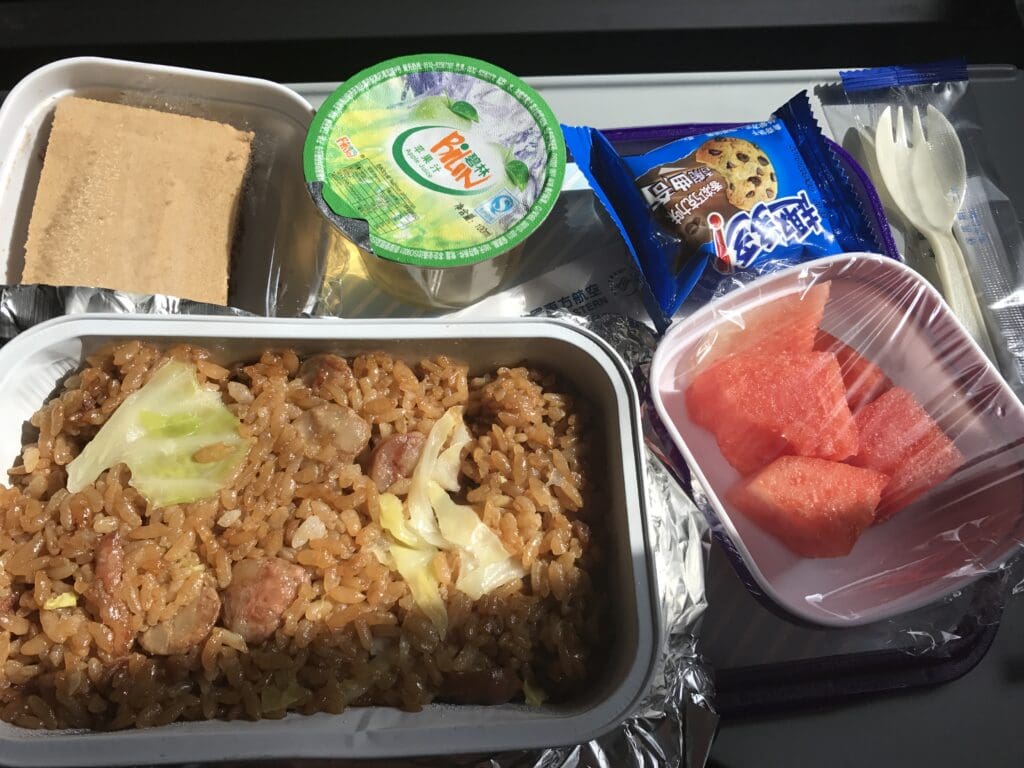
Aside from the meal service, the rest of the flight was pleasantly uneventful, with thick clouds ensuring nothing could be seen of the world below until the aircraft was on final approach to Naha Airport. Eventually, the aircraft could be felt commencing its descent, which was promptly followed by an announcement informing us all that the aircraft was thirty minutes away from landing in Okinawa. This was followed several minutes later by the reillumination of the seatbelt signs and several bumps as the aircraft headed downwards. Once the seatbelt signs were reilluminated, the crew appeared rather eager to promptly ensure the cabin was secure for landing, passing through conducting their final checks only a relatively short time after the aircraft had descended down from its cruising altitude.
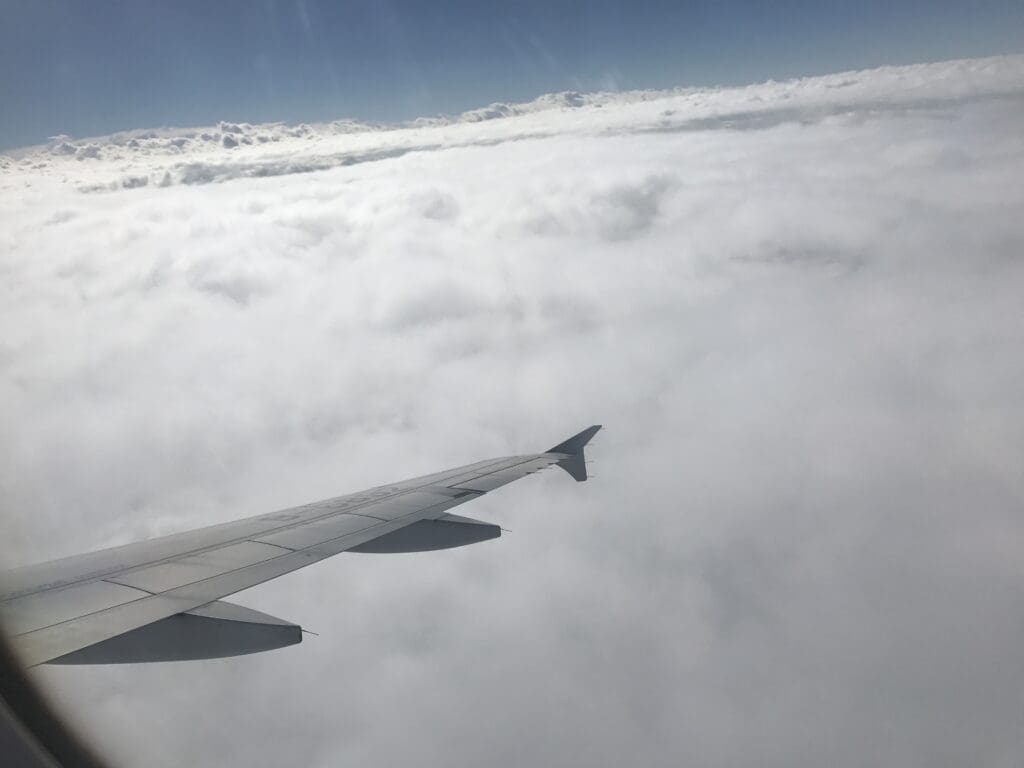
Following several gentle turns, the flaps were extended and as the aircraft neared the airport, the jet sank below the clouds revealing the Okinawan coastline near the city of Itoman. As we neared the airport, harbours and industrial areas could be seen below and at 1622 the A320 whizzed past a holding Hong Kong Airlines Airbus A320 and Japan Transocean Airlines Boeing 737 before making a soft return to earth on Naha Airport’s Runway 36. After decelerating past a squadron of locally based Japan Maritime Self-Defense Force Kawasaki P-3 Orions, the aircraft taxied off the runway and made a quick taxi over to the international terminal. There, the aircraft slotted in between a Jeju Air Boeing 737-800 and a Dragonair Airbus A321 that had arrived from Seoul Incheon and Hong Kong respectively.
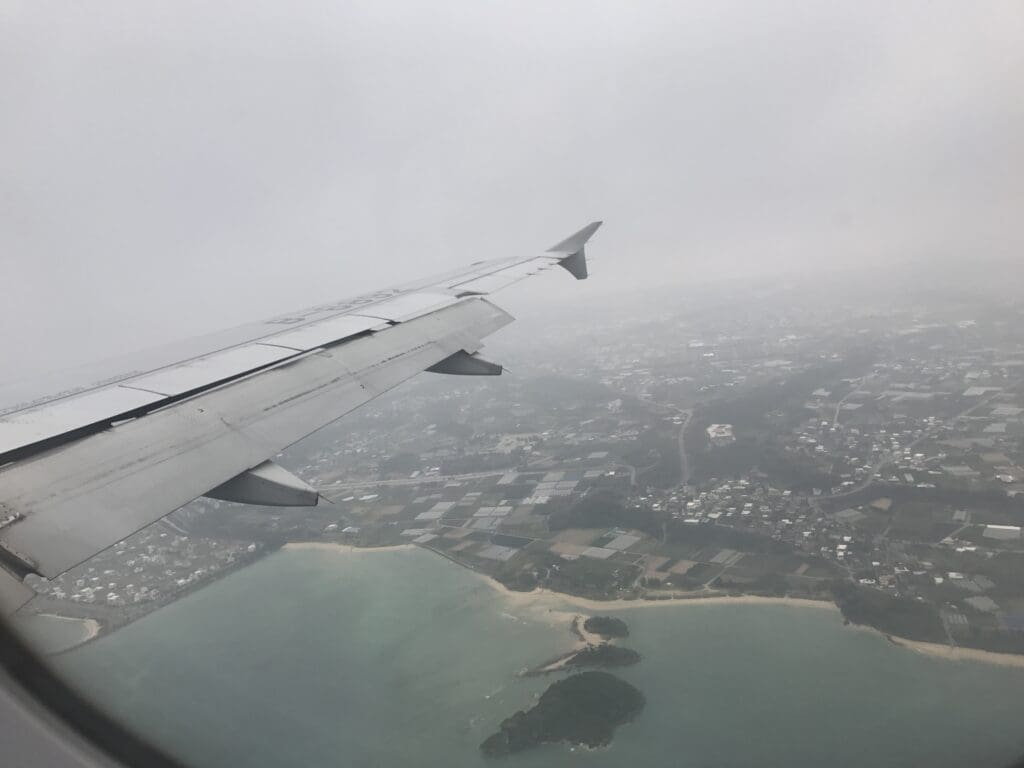
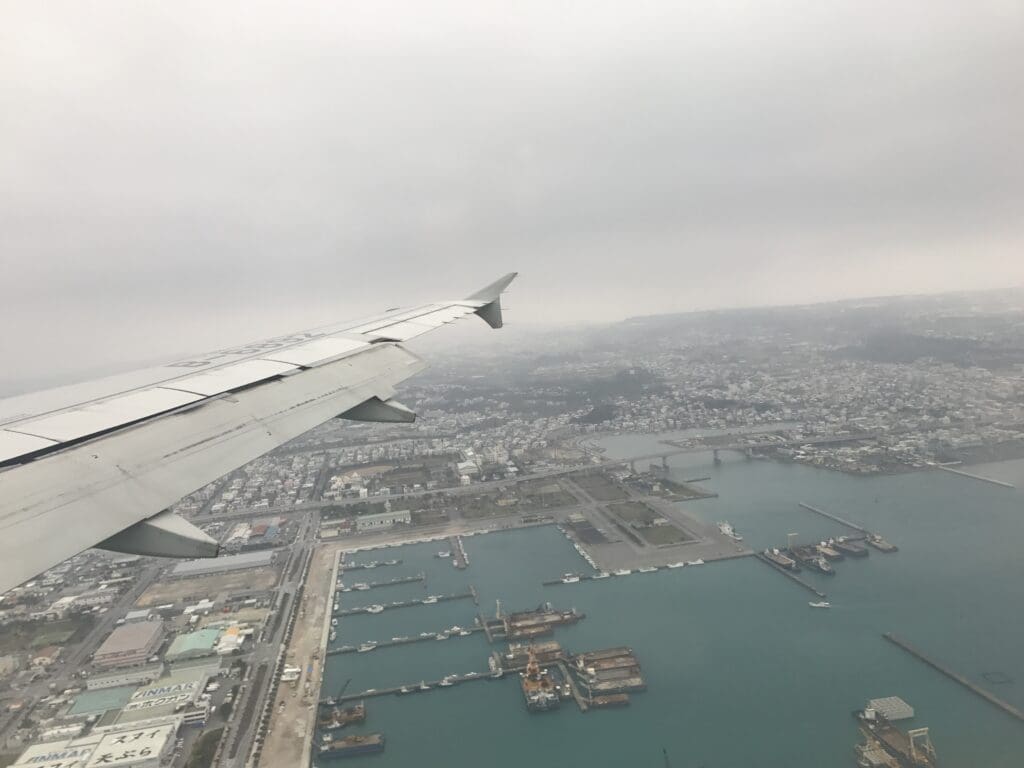
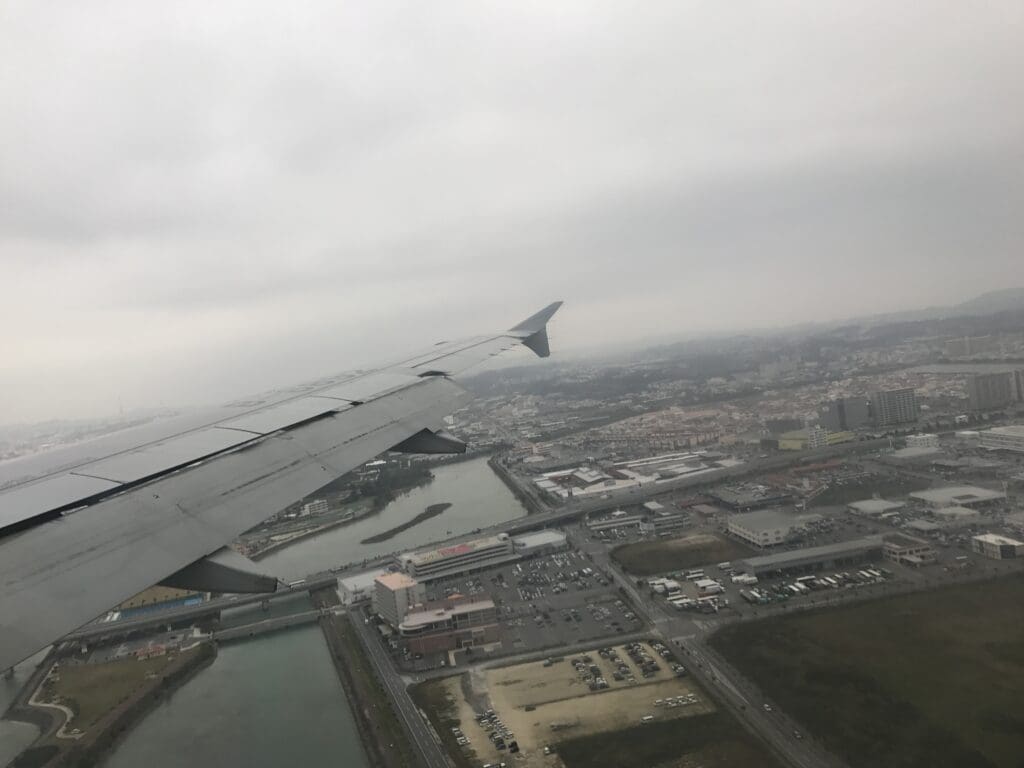

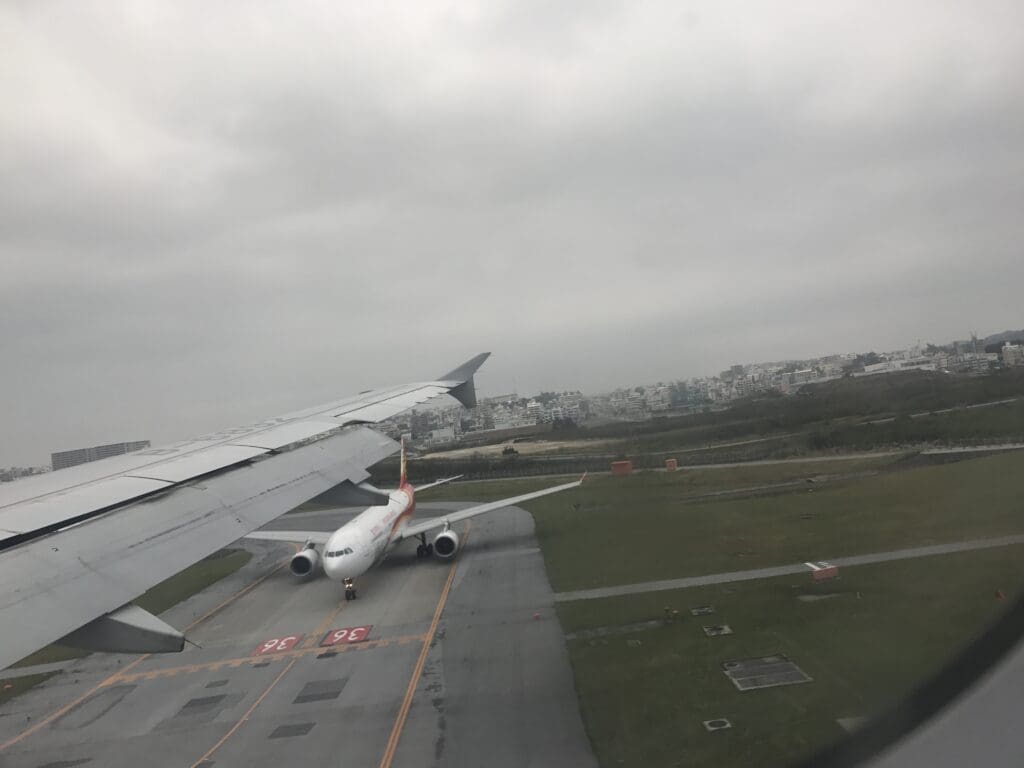
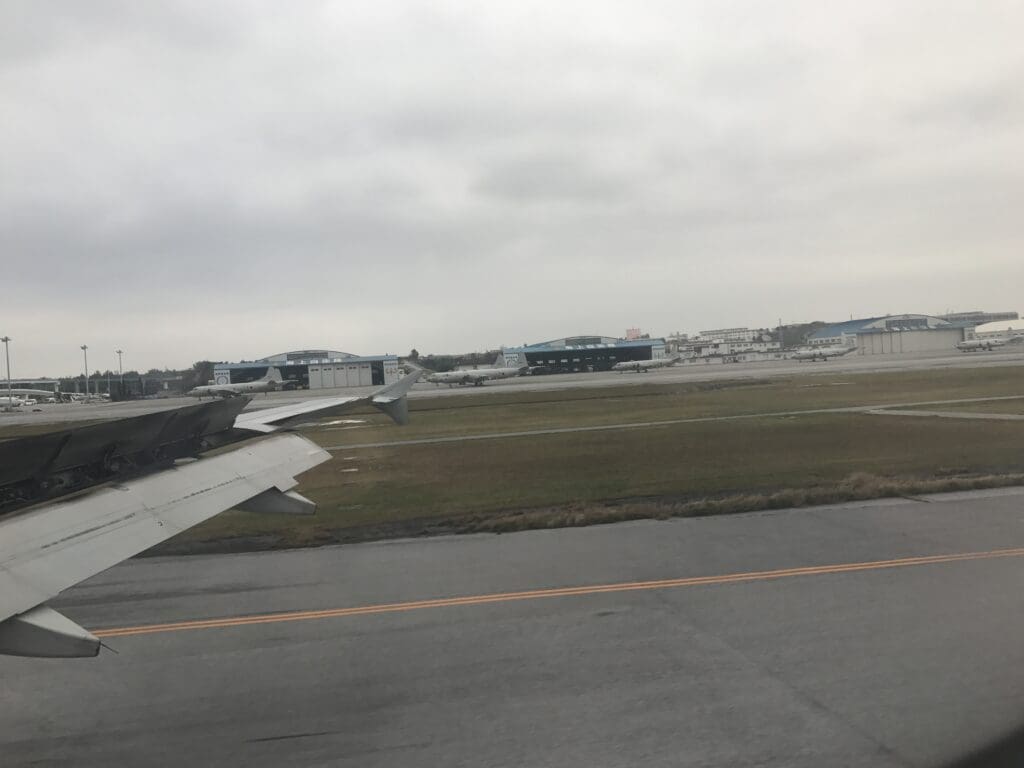
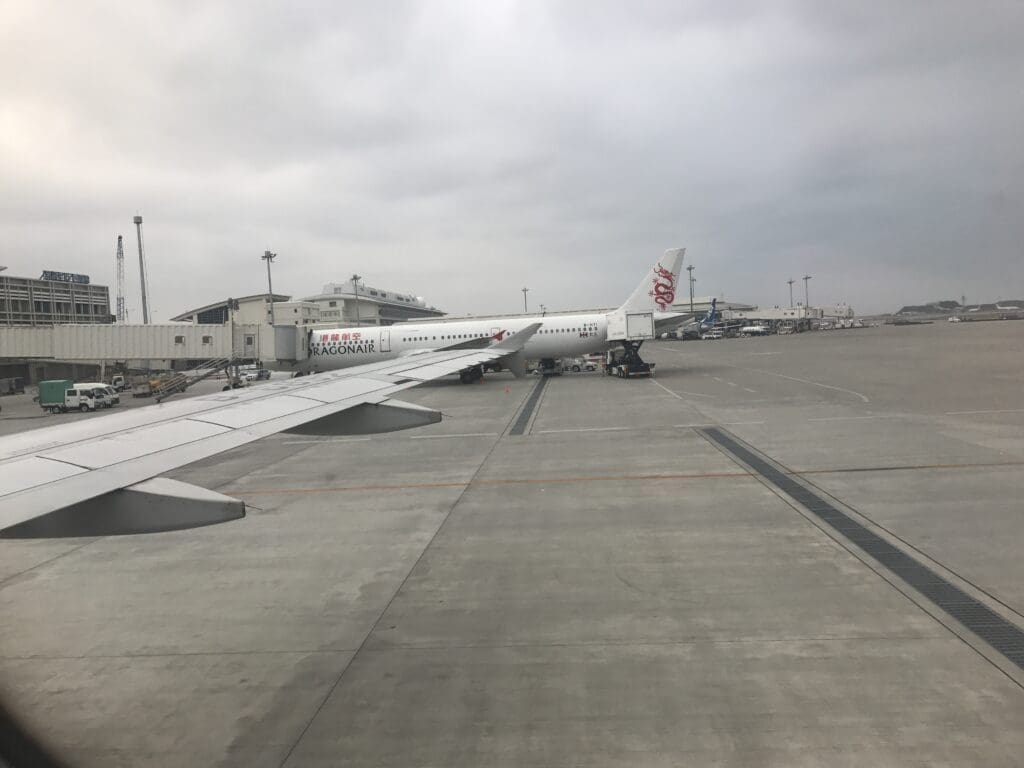
Once the engines were spooled down, the jetbridge was connected in record time and thus disembarkation commenced promptly. After thanking the crew, I made my way into the small but modern and spotlessly clean arrivals area of the airport, where I joined a short queue for immigration, making it landside within about twenty minutes after stepping off the aircraft.
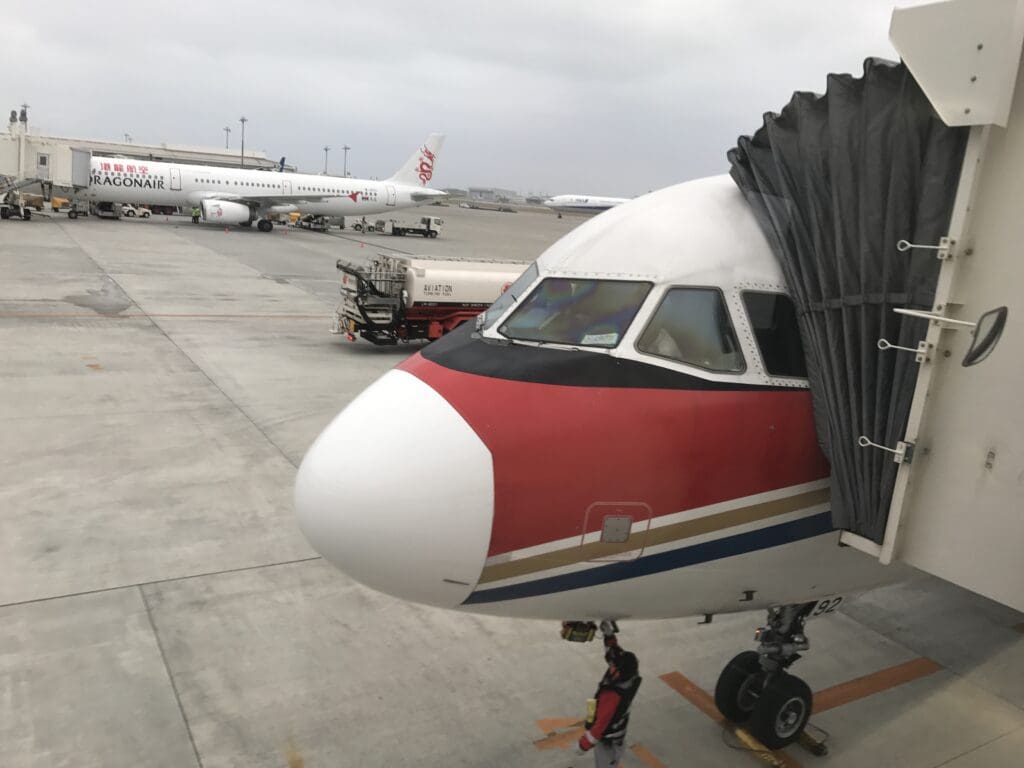
Summary
All in all, whilst I may have had slight complaints about certain aspects of the airline, my first three flights with China Eastern Airlines went smoothly without any glitches. Whilst unfortunately the same could not be said about a number of my later flights with the airline, especially on the return trip which would see me arrive back in Korea with a 24-hour delay, my outbound journey to Okinawa was a relatively pleasant and stress-free experience.

